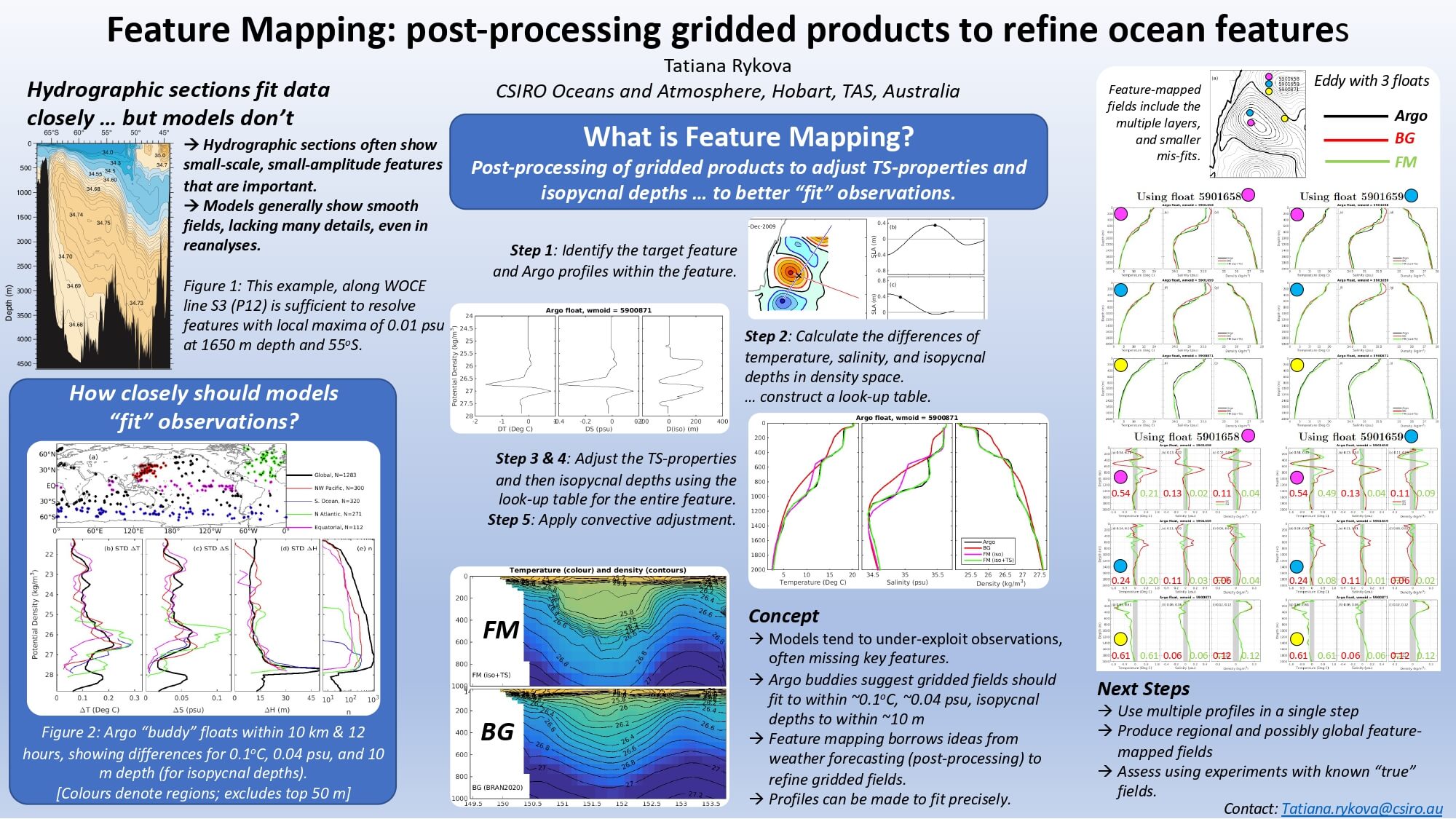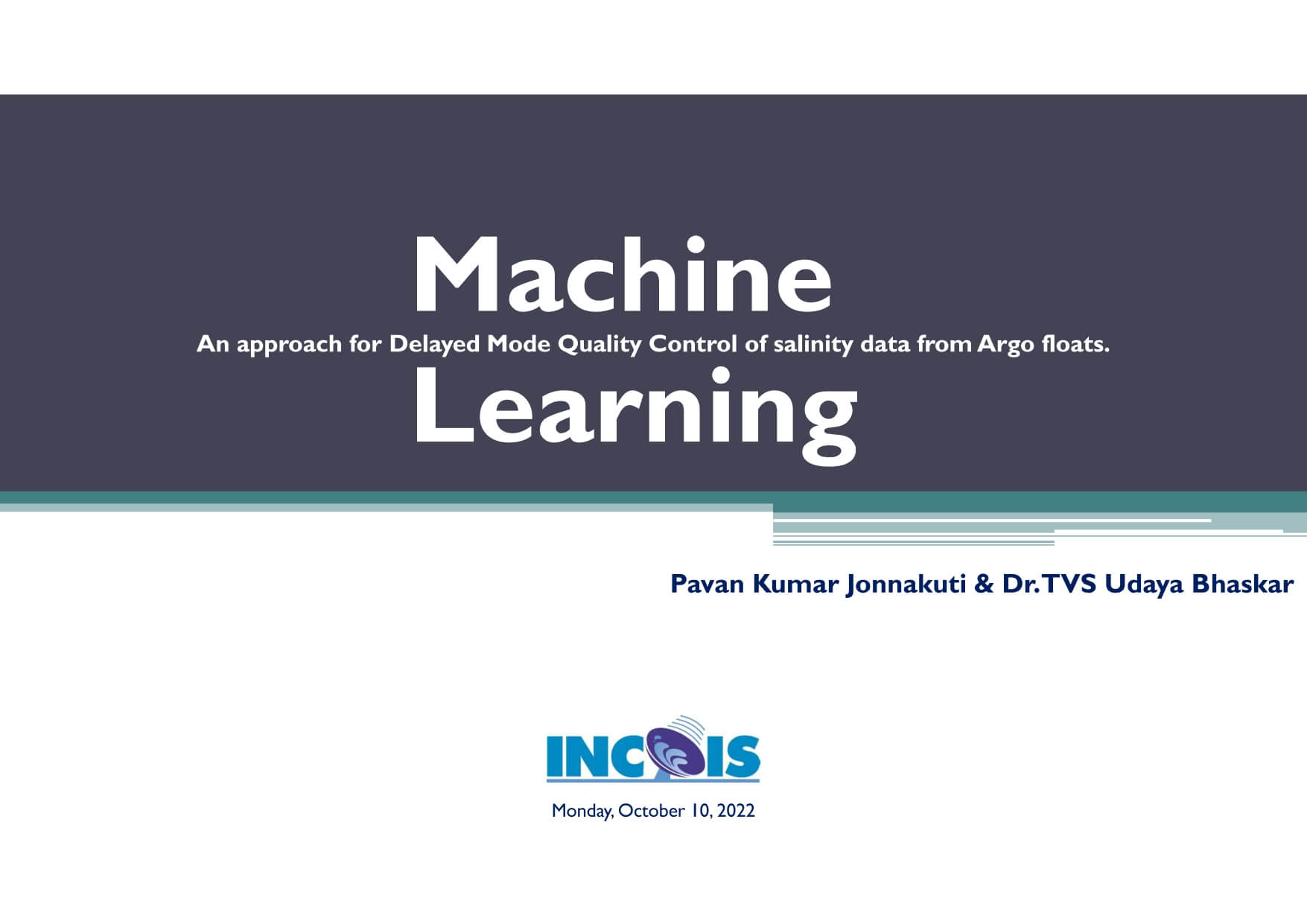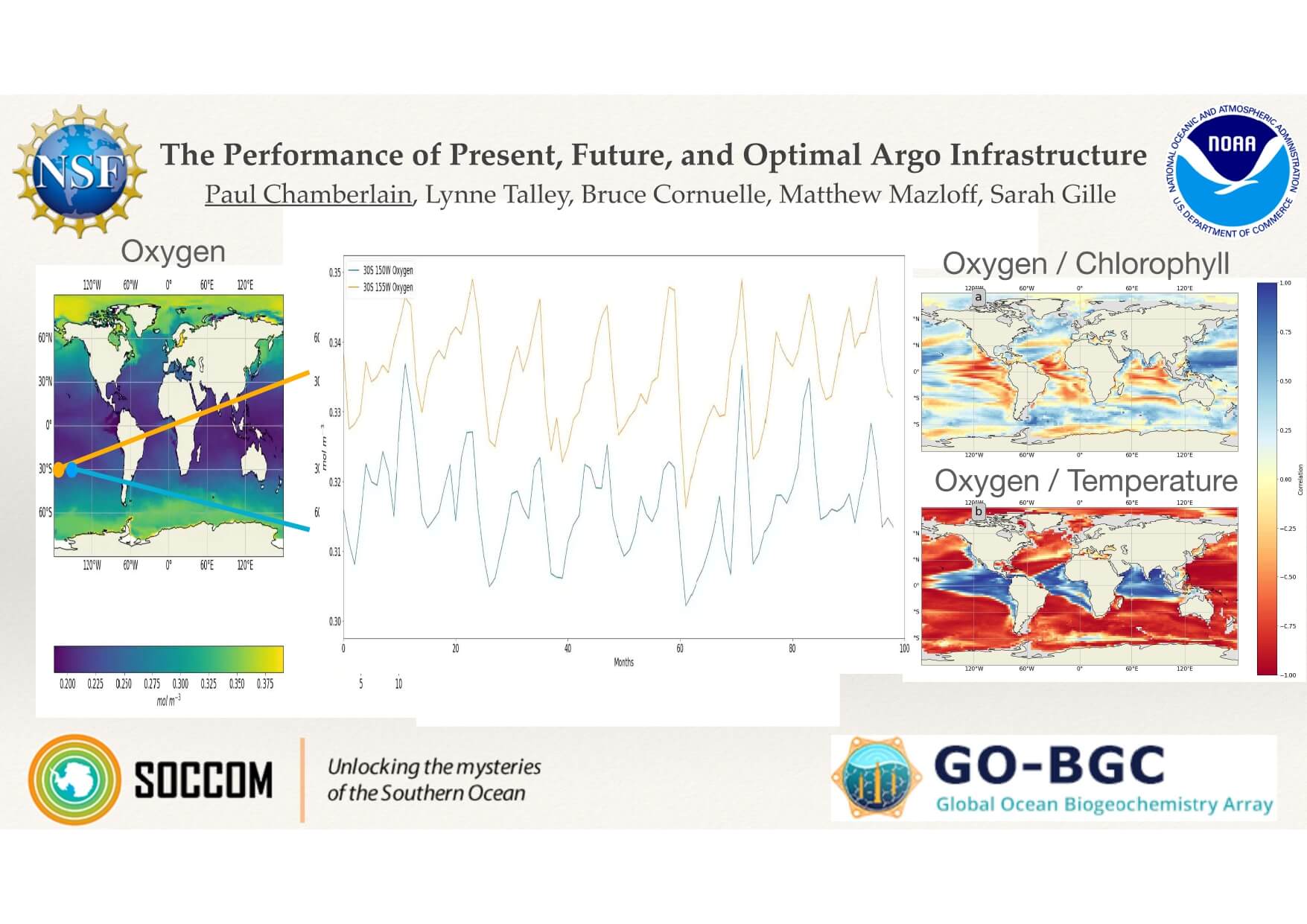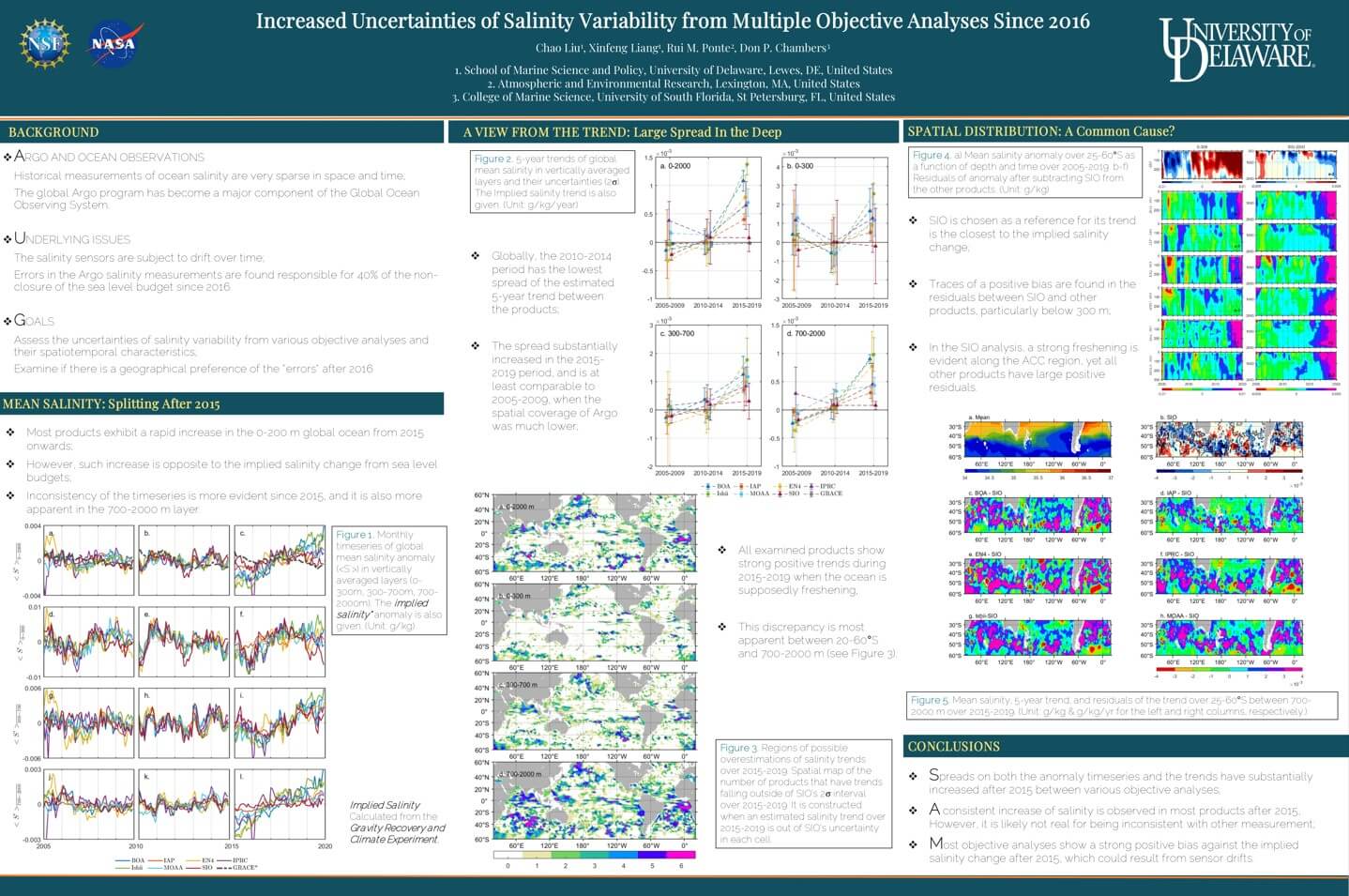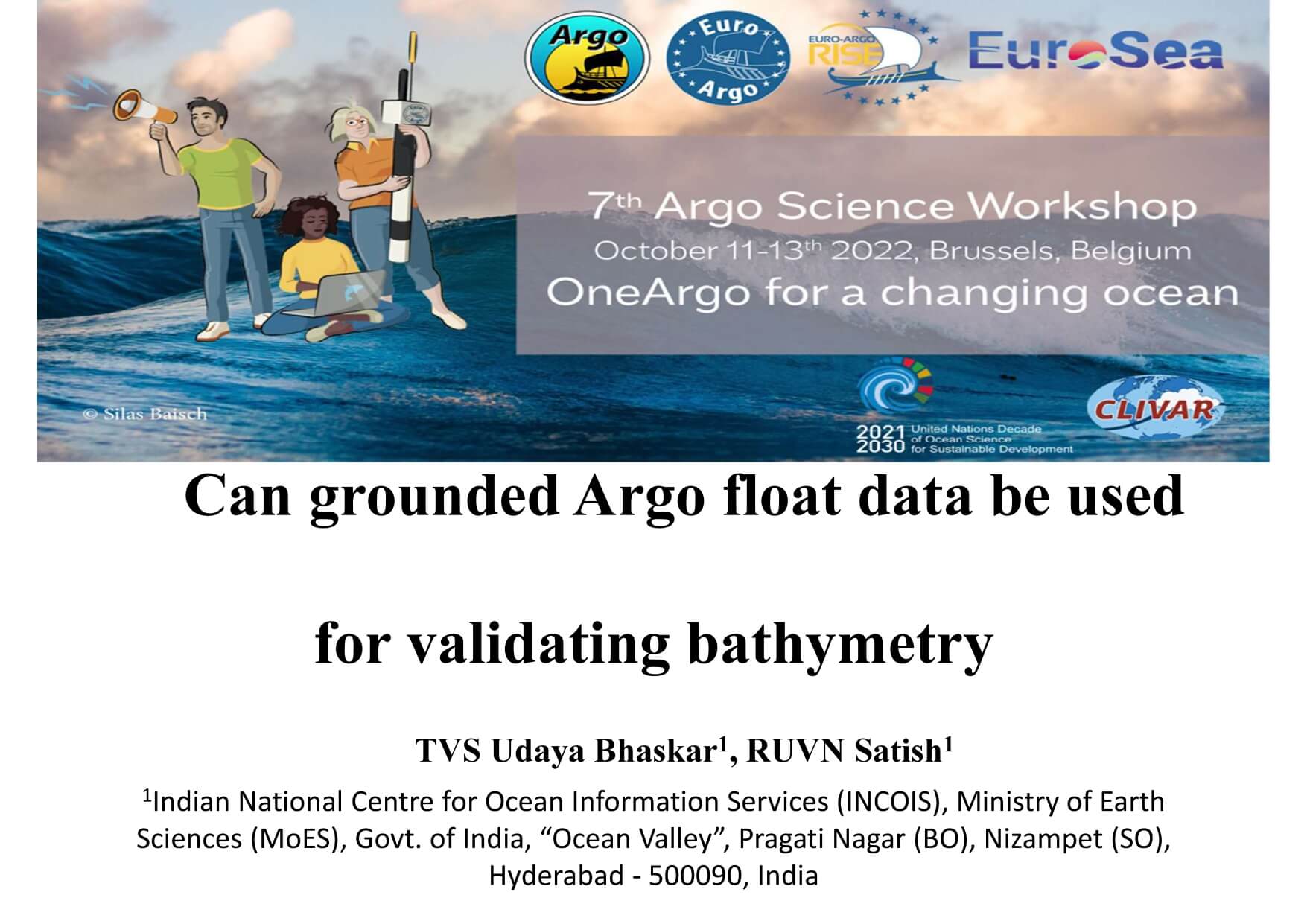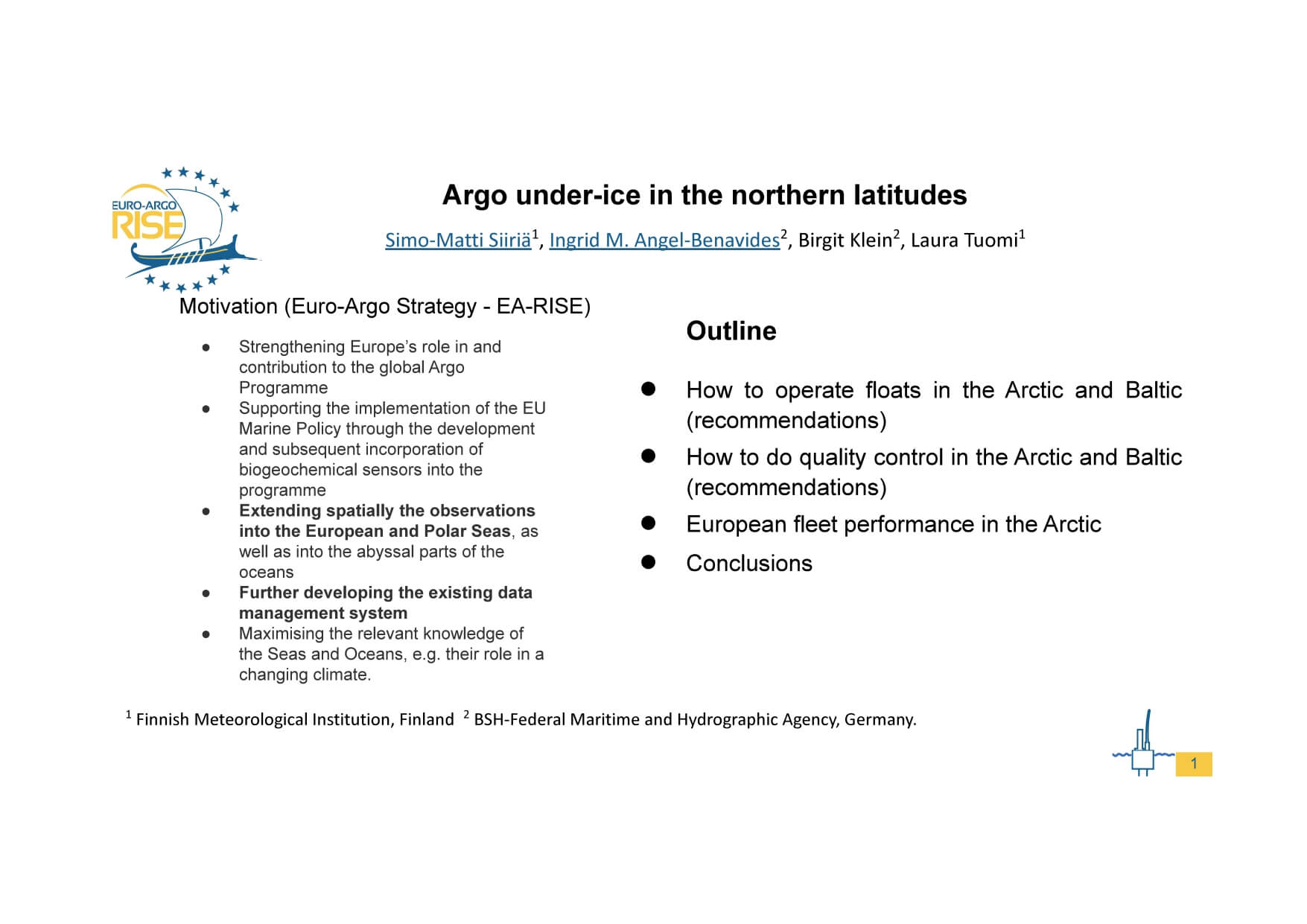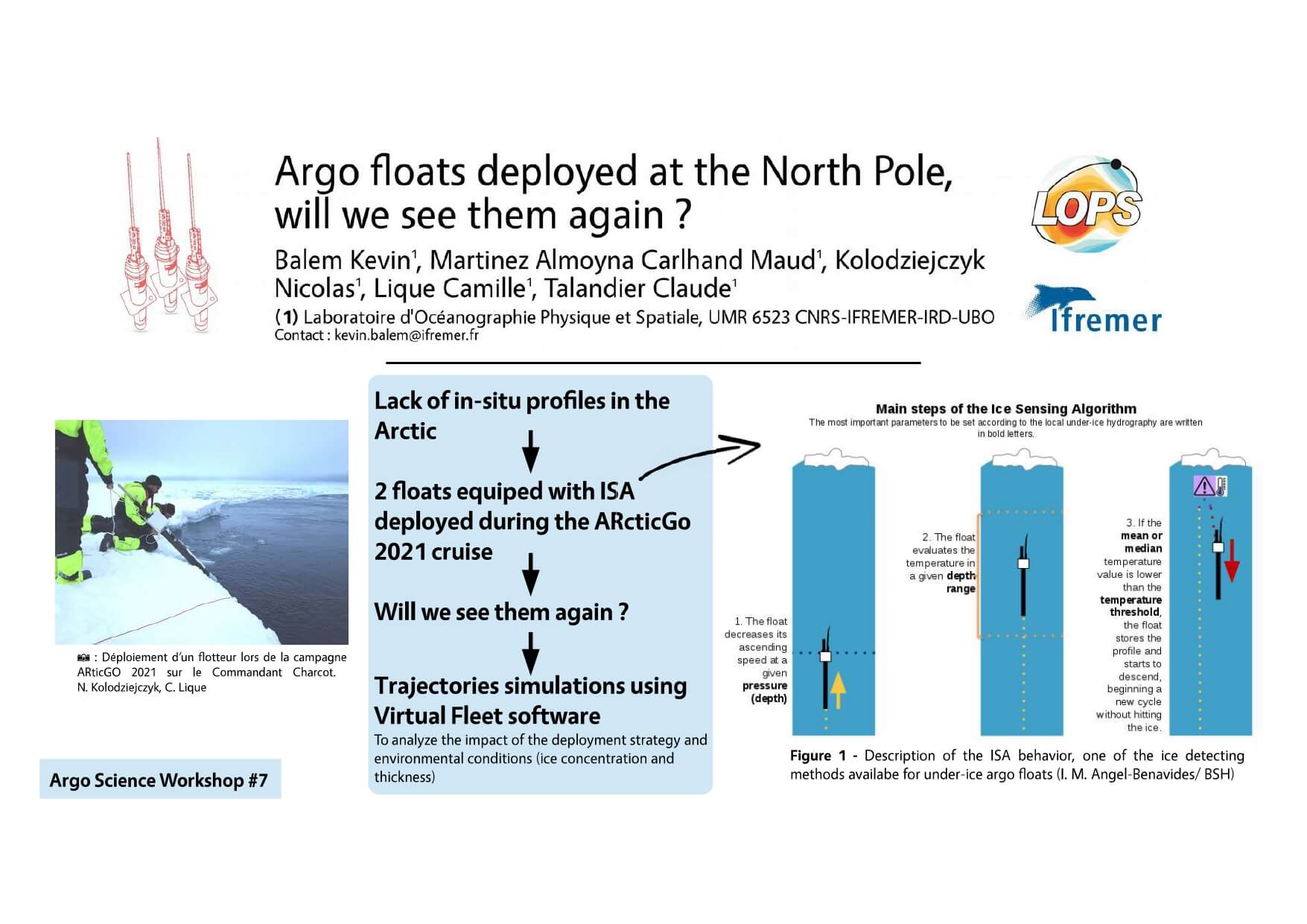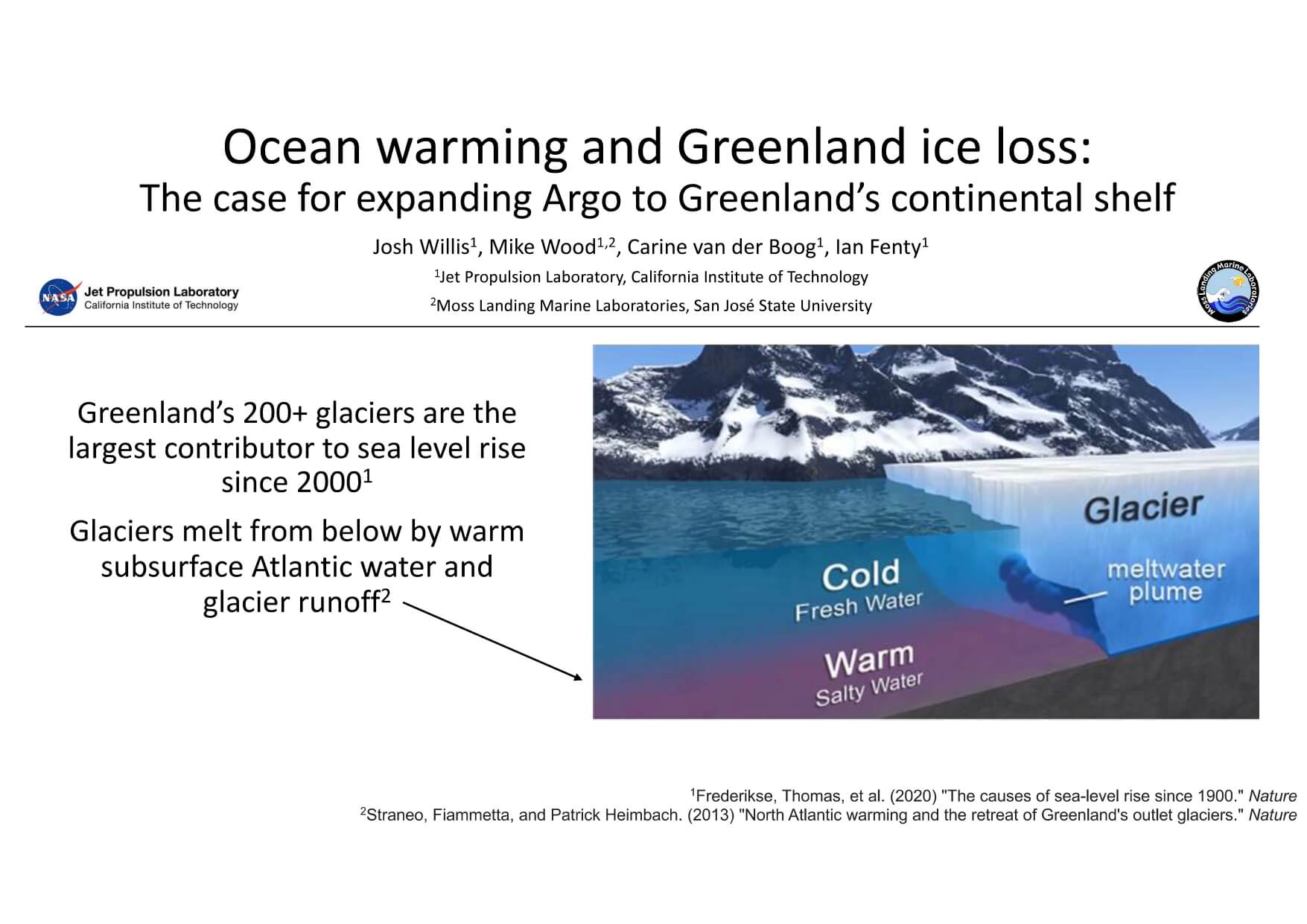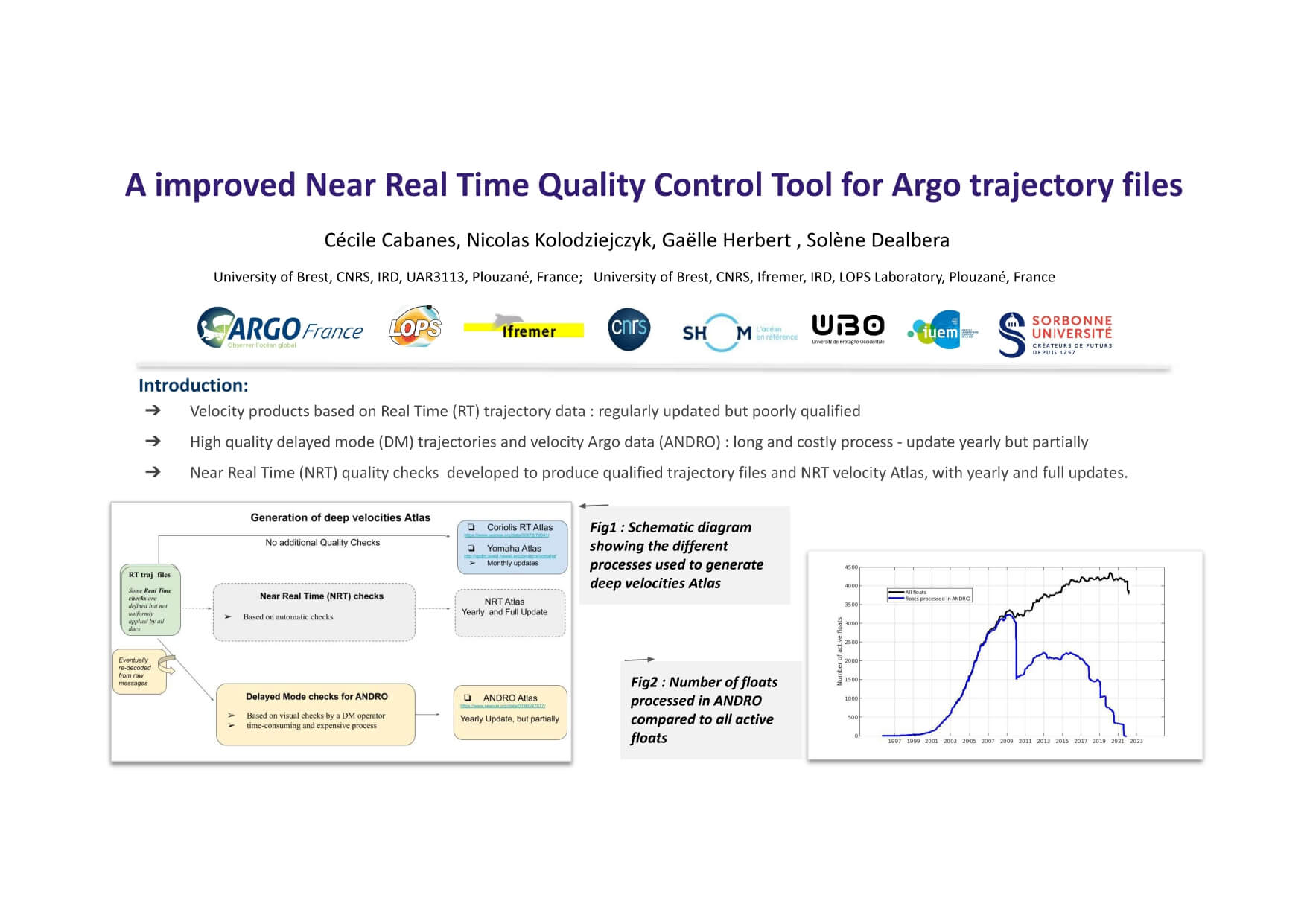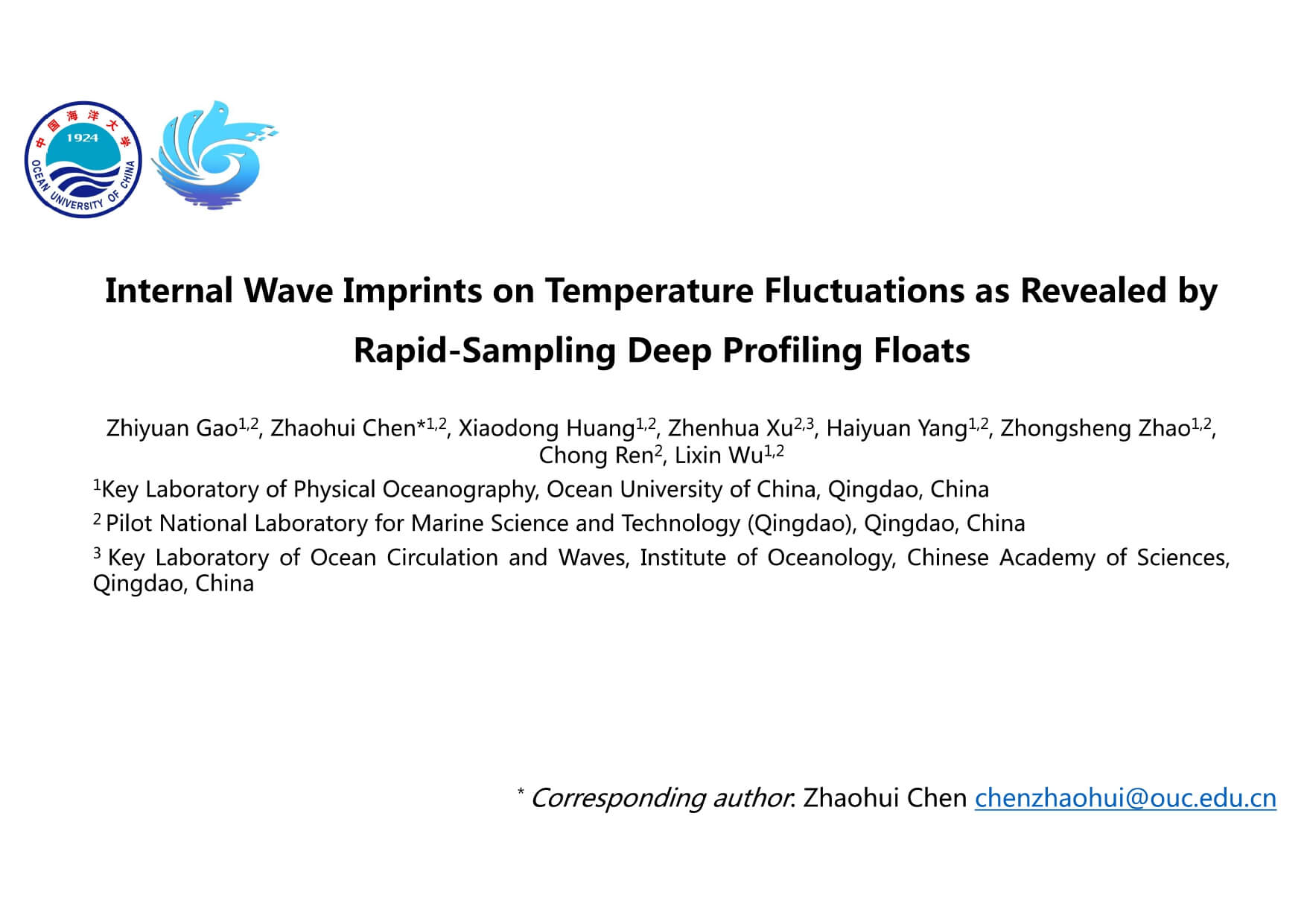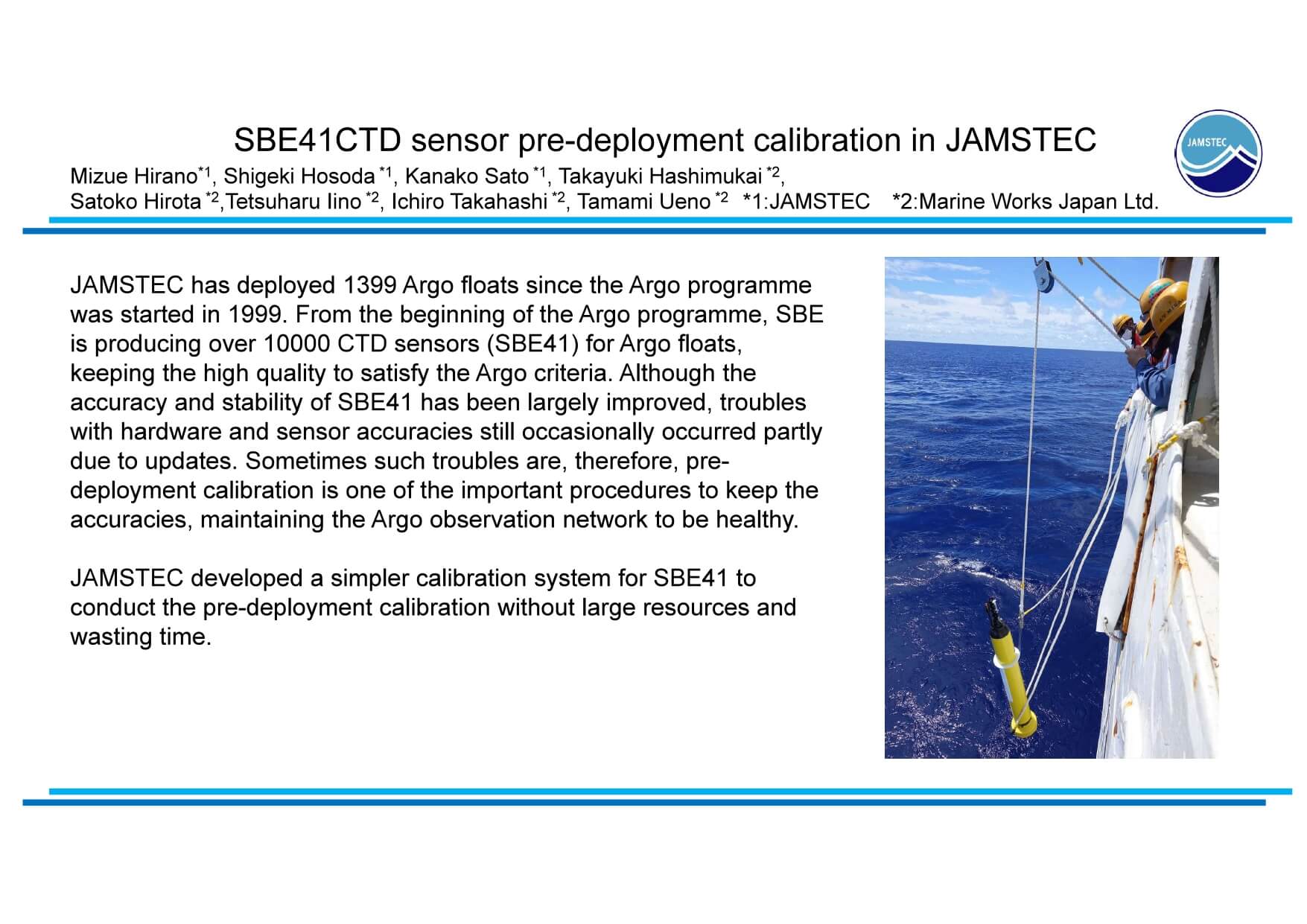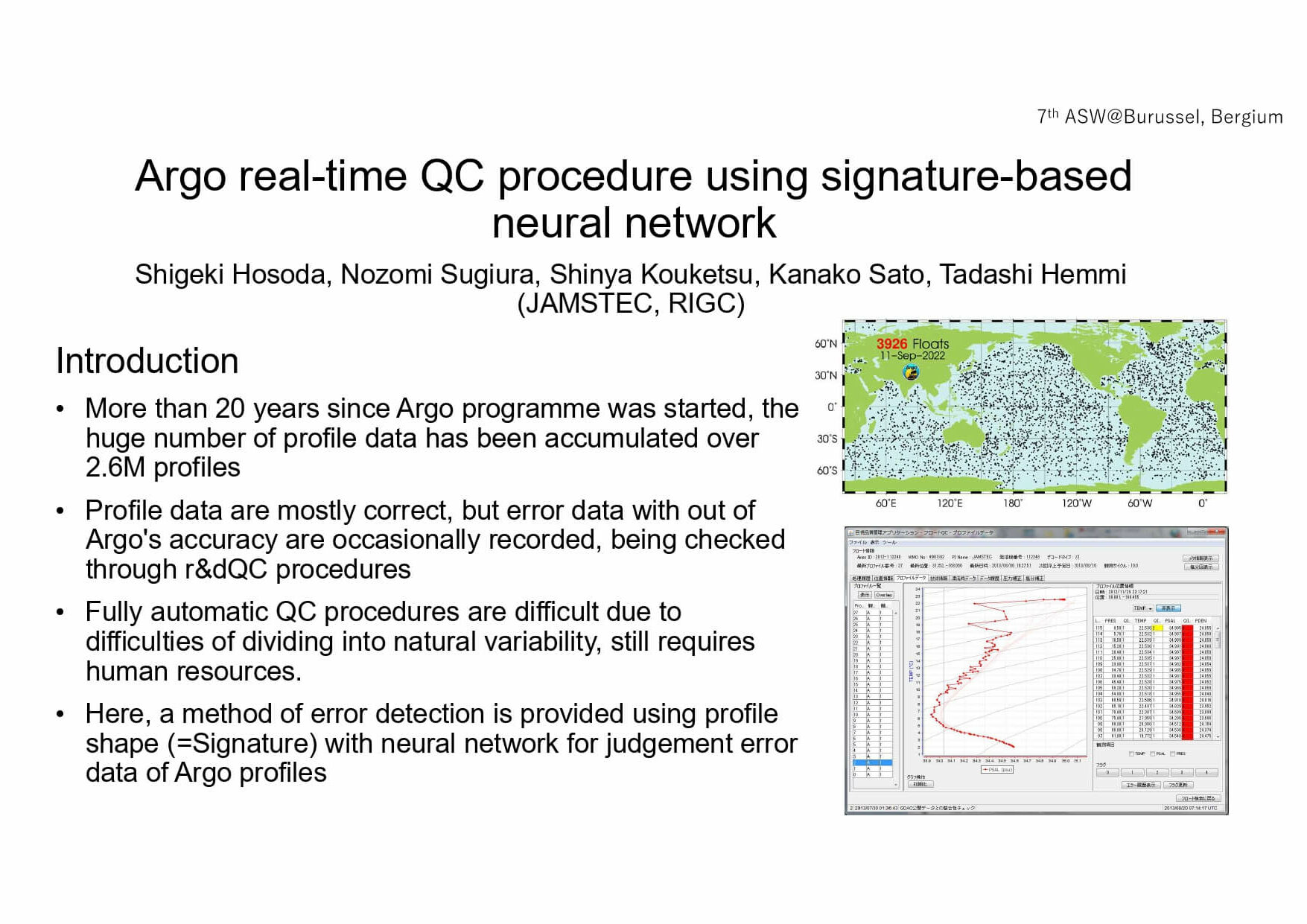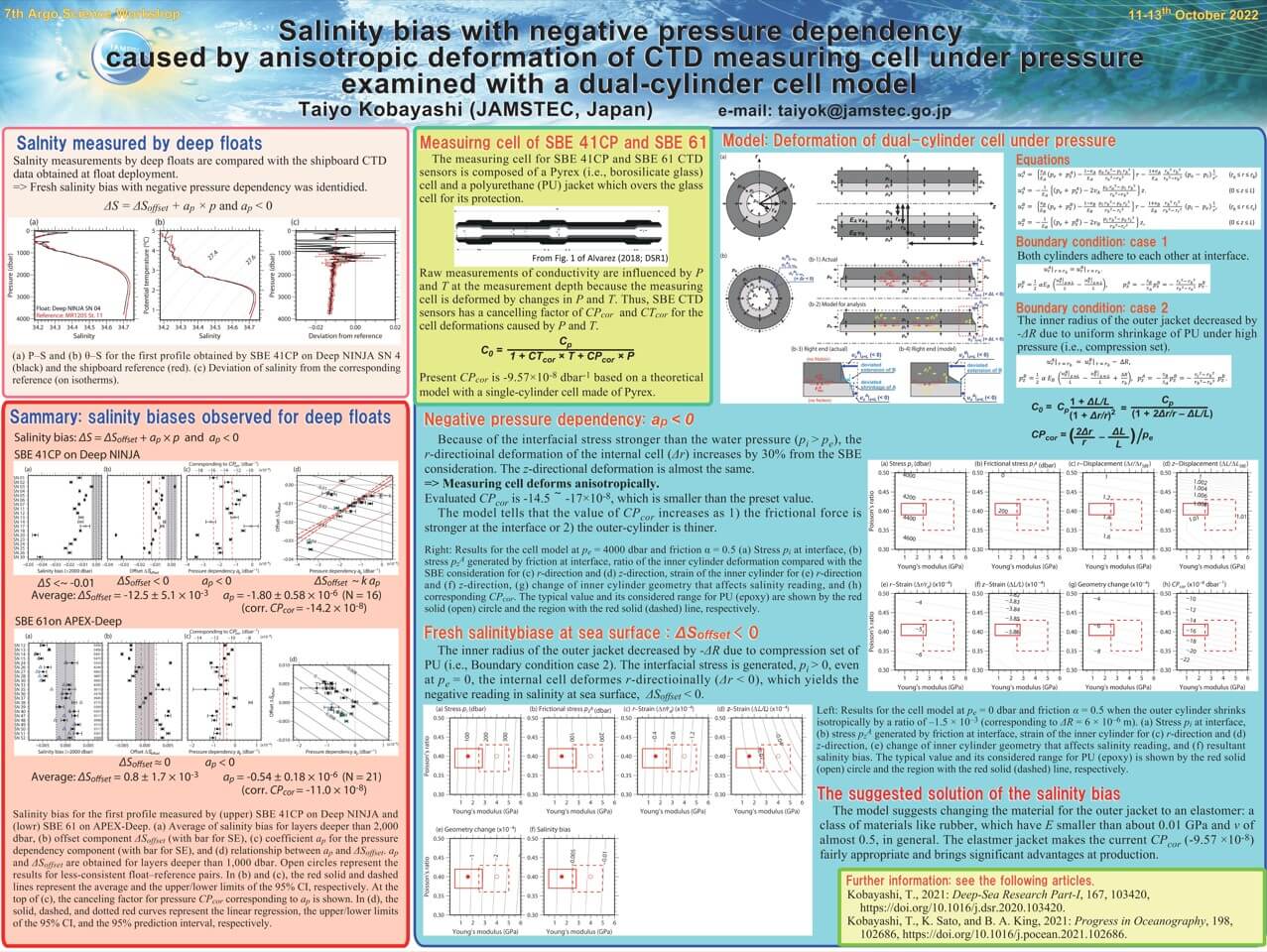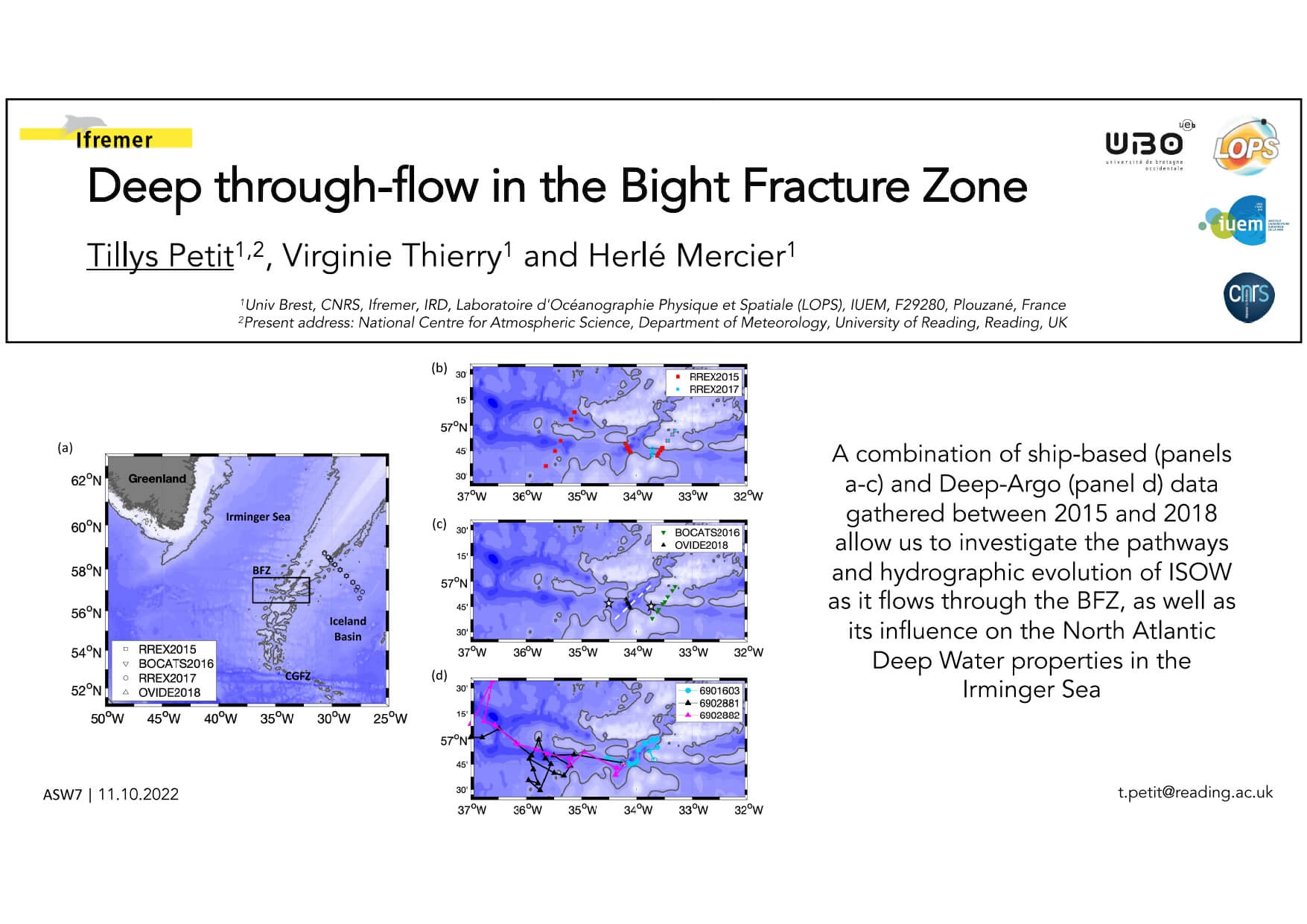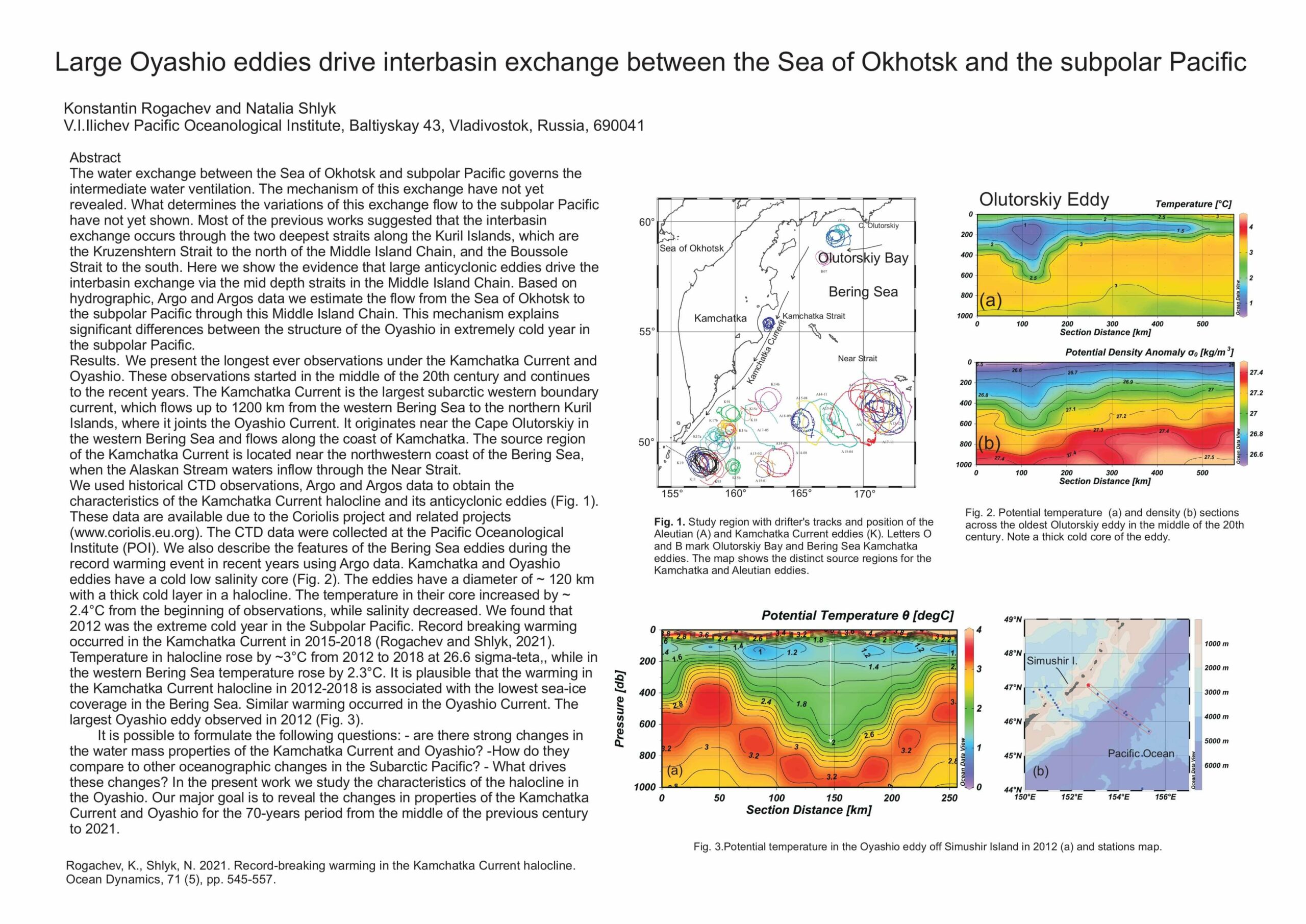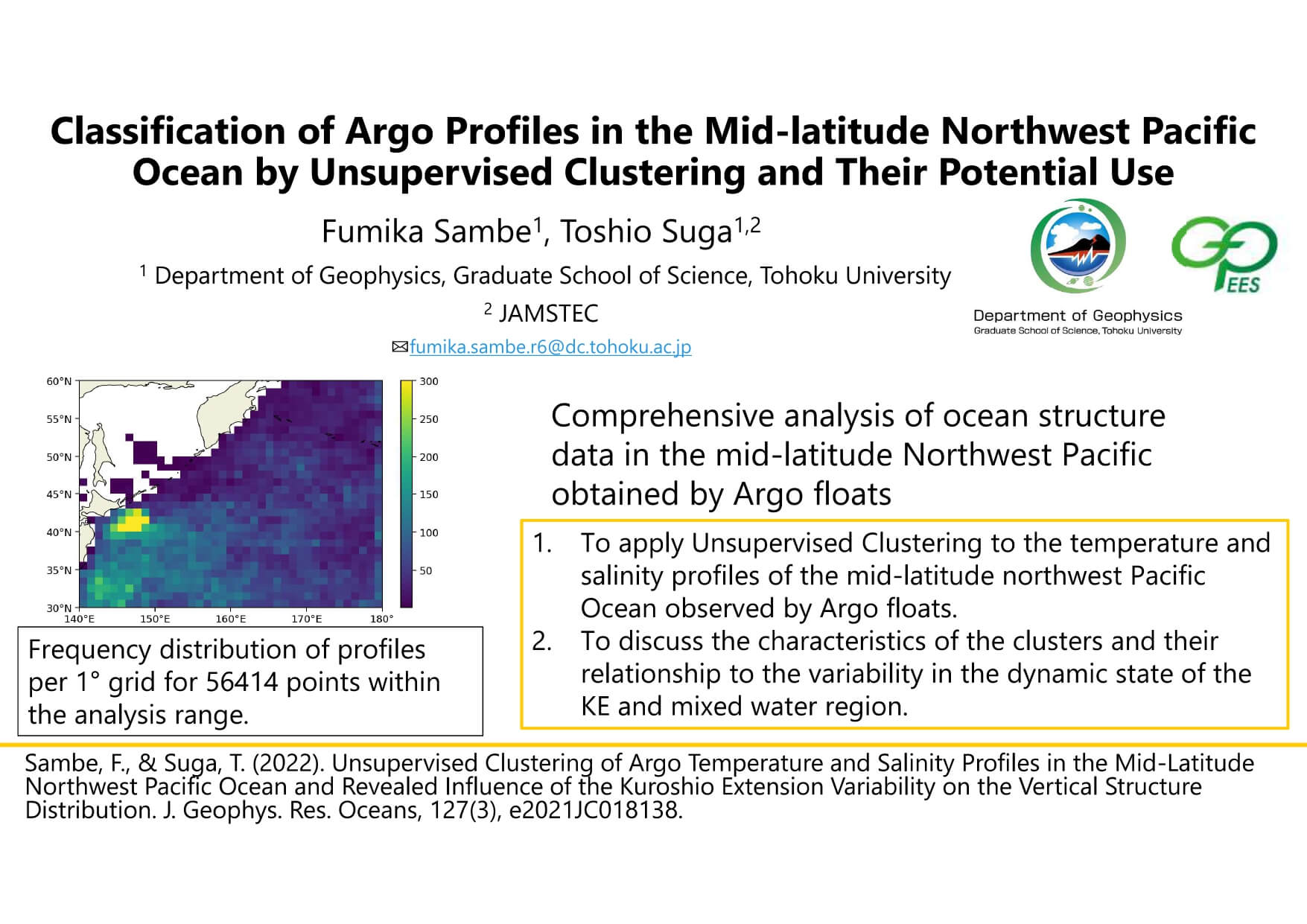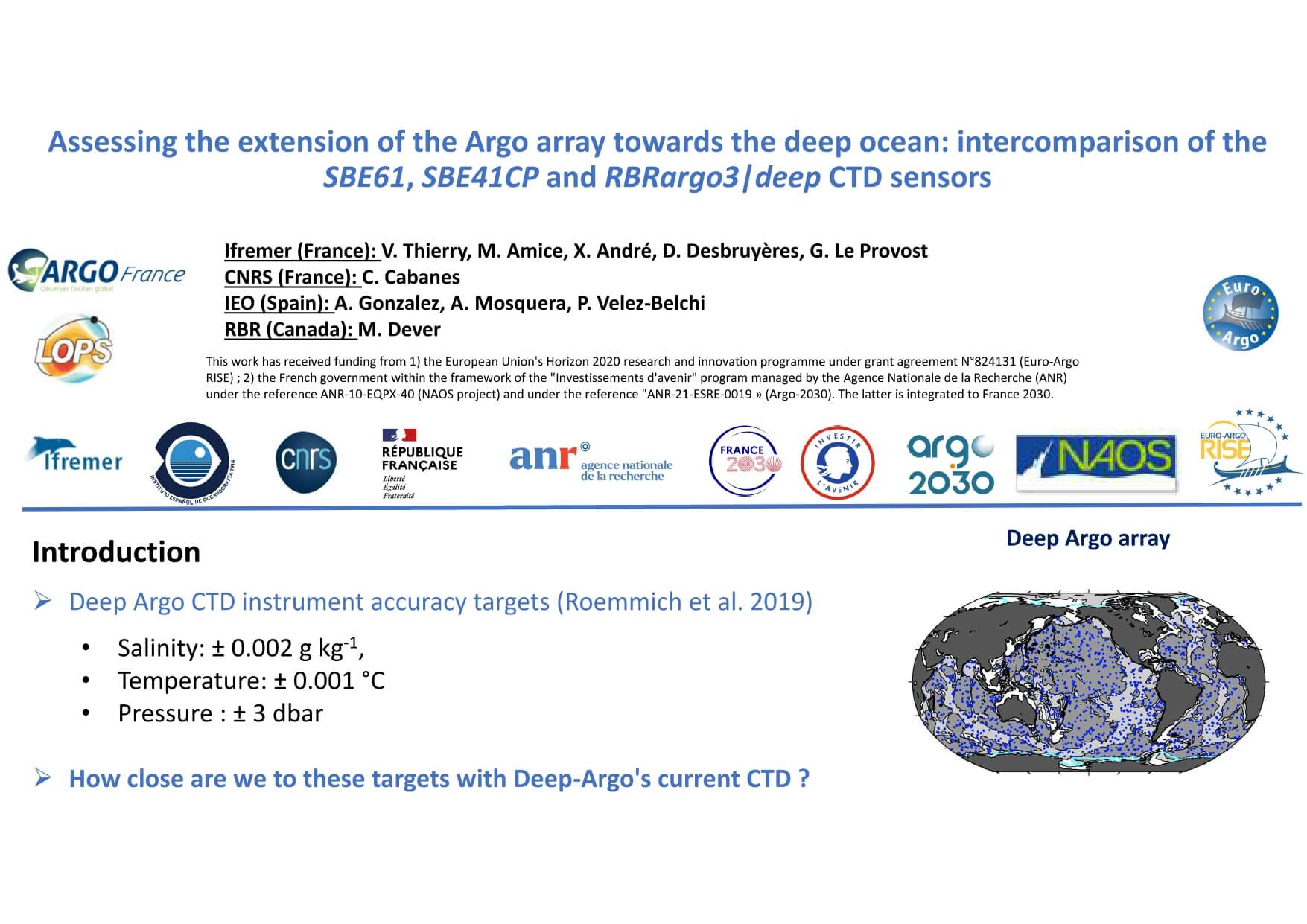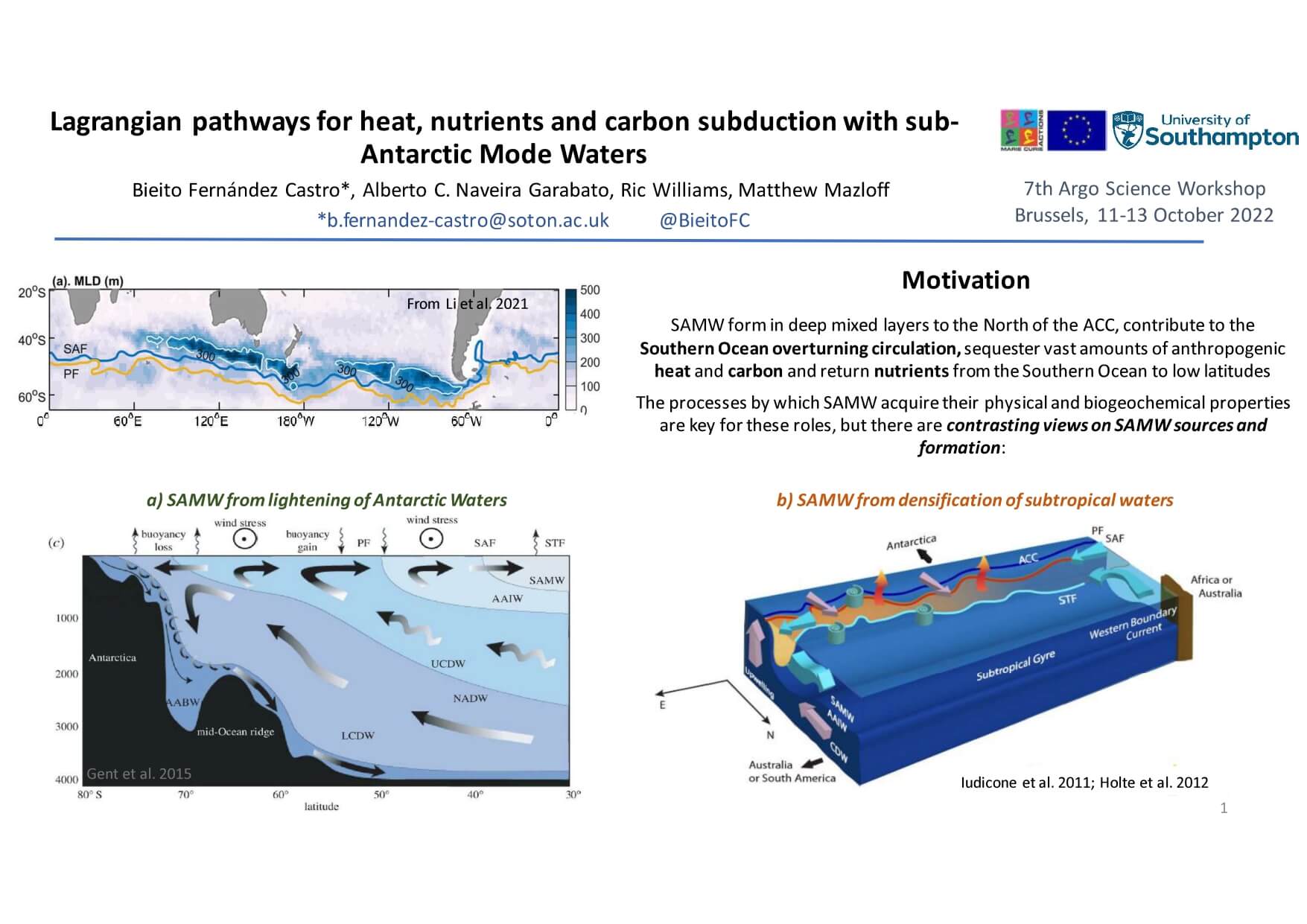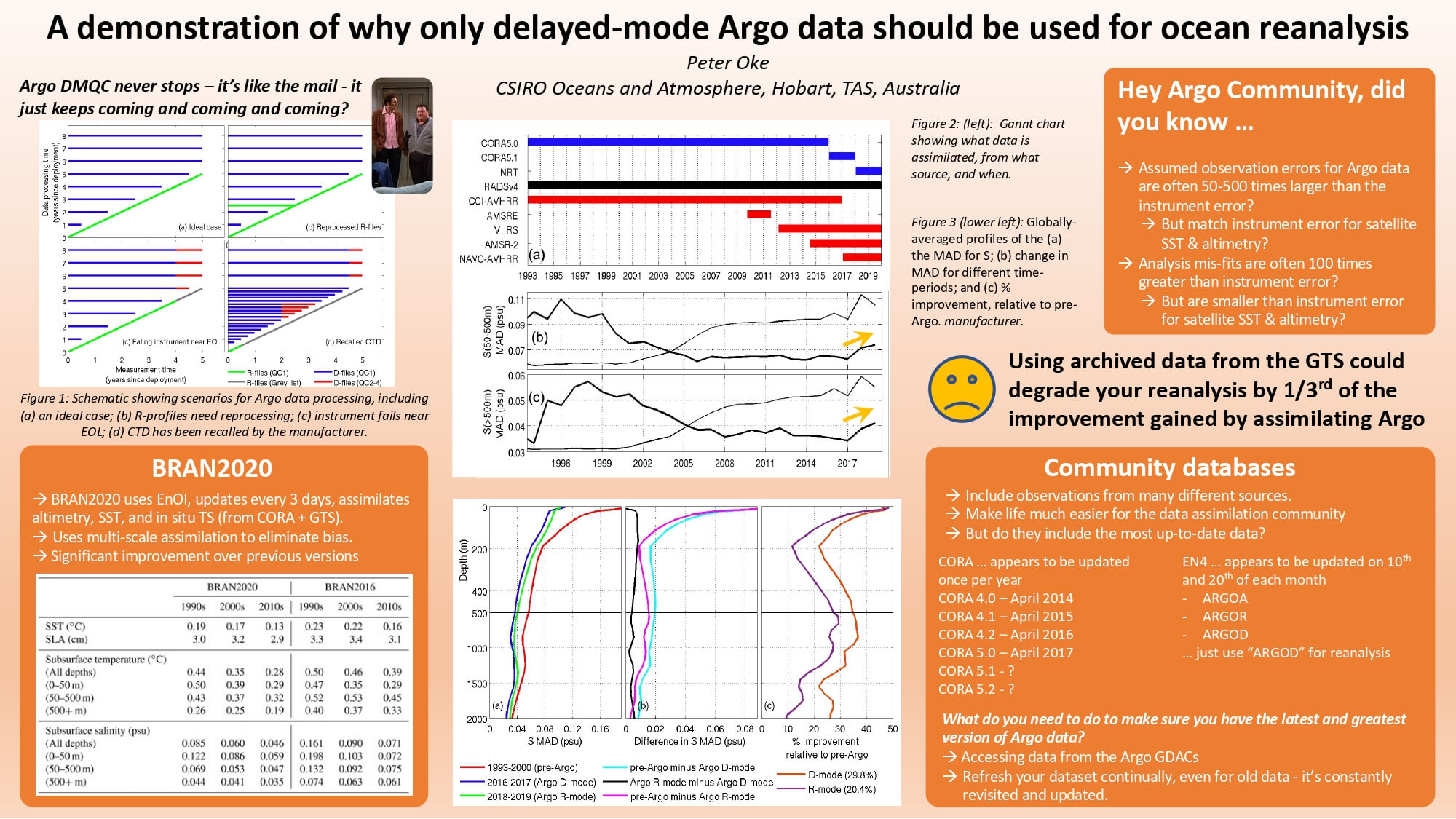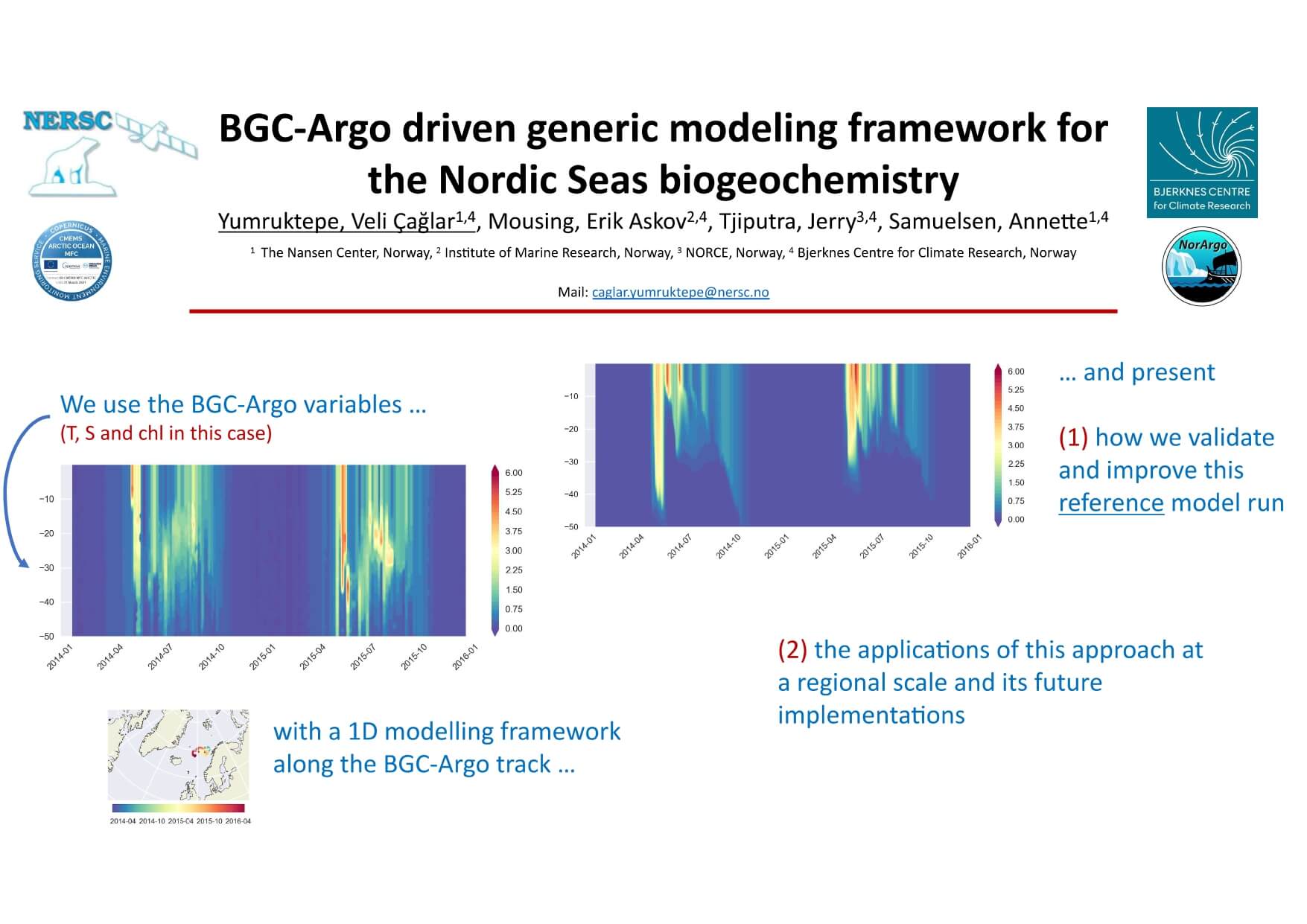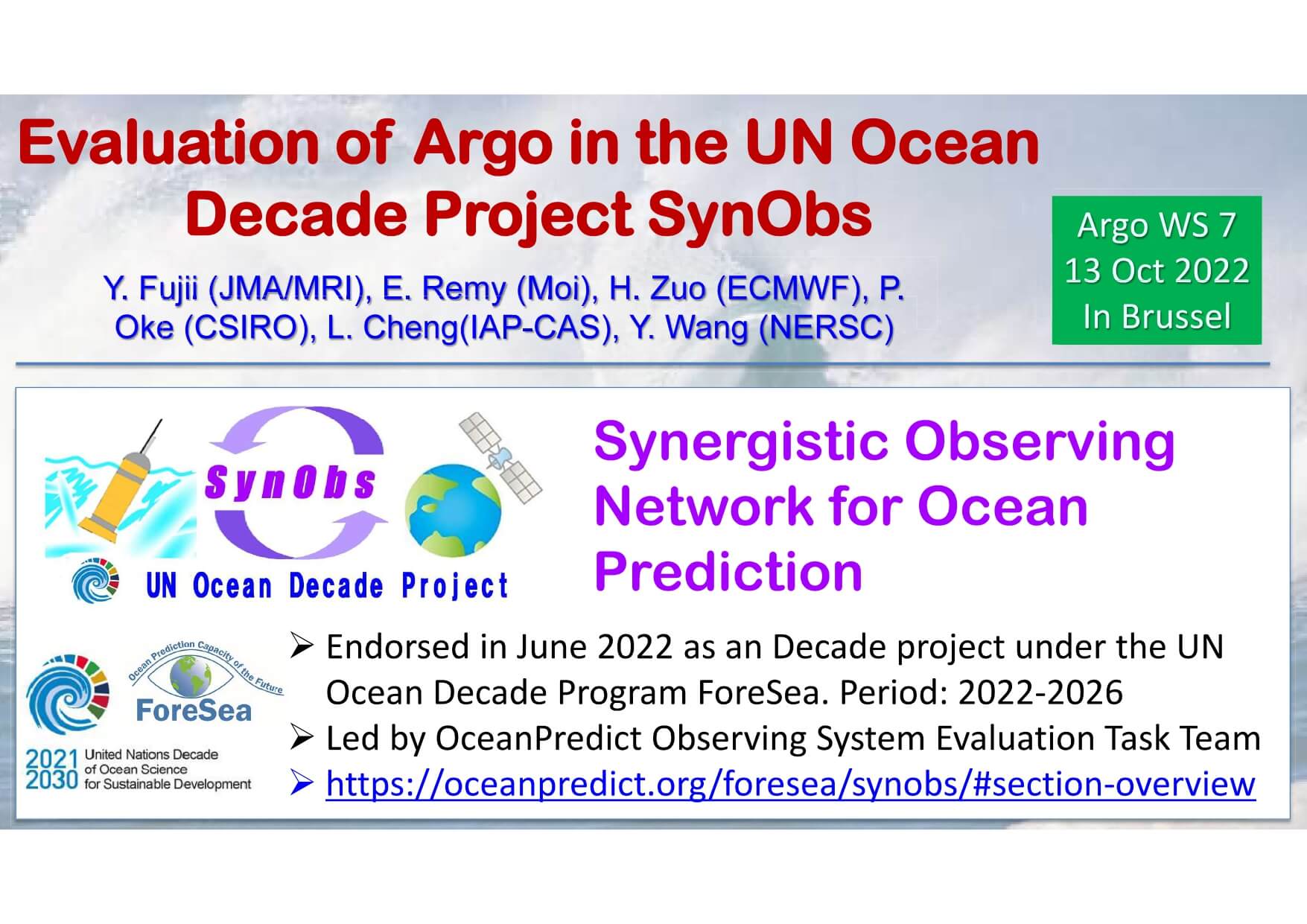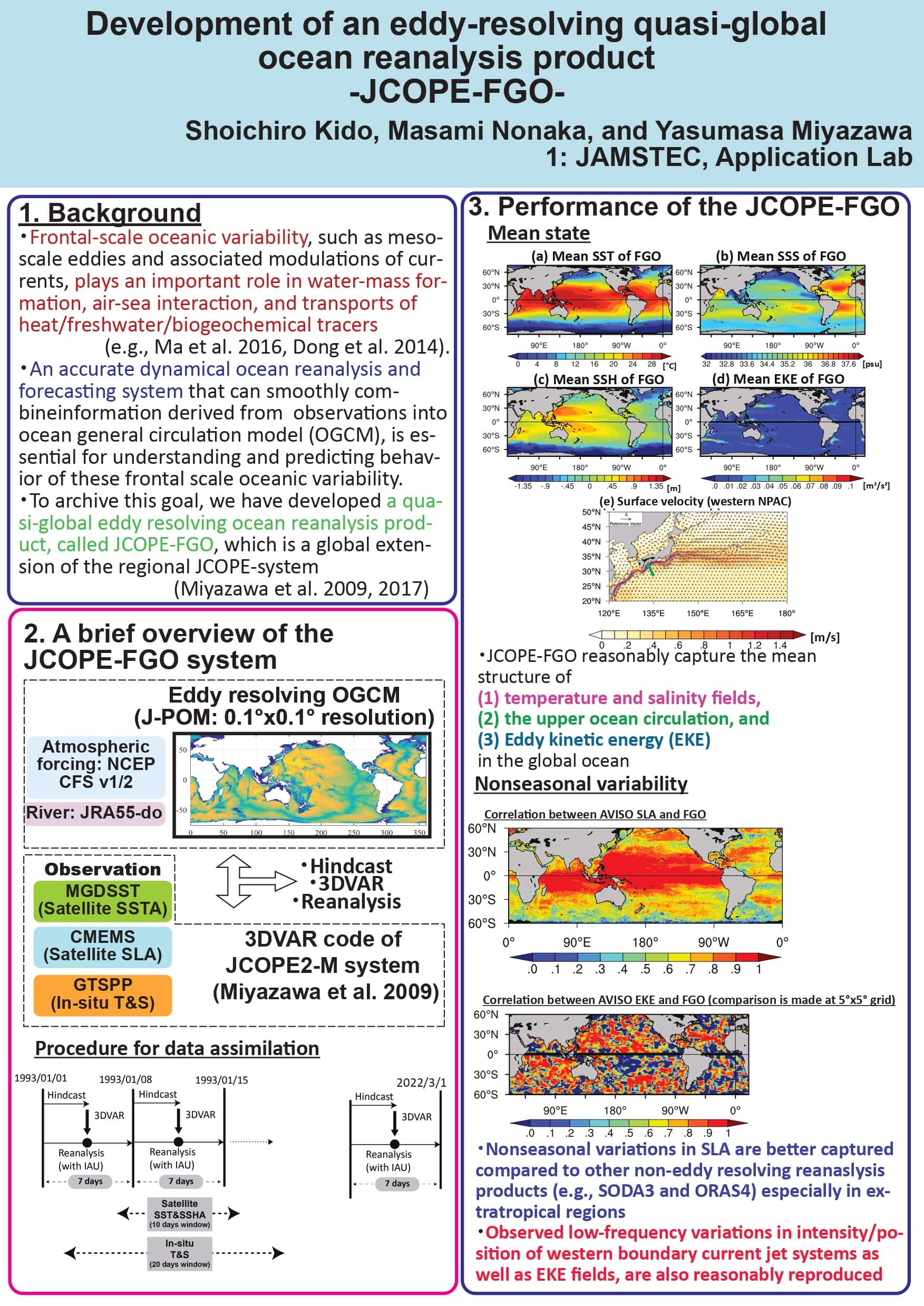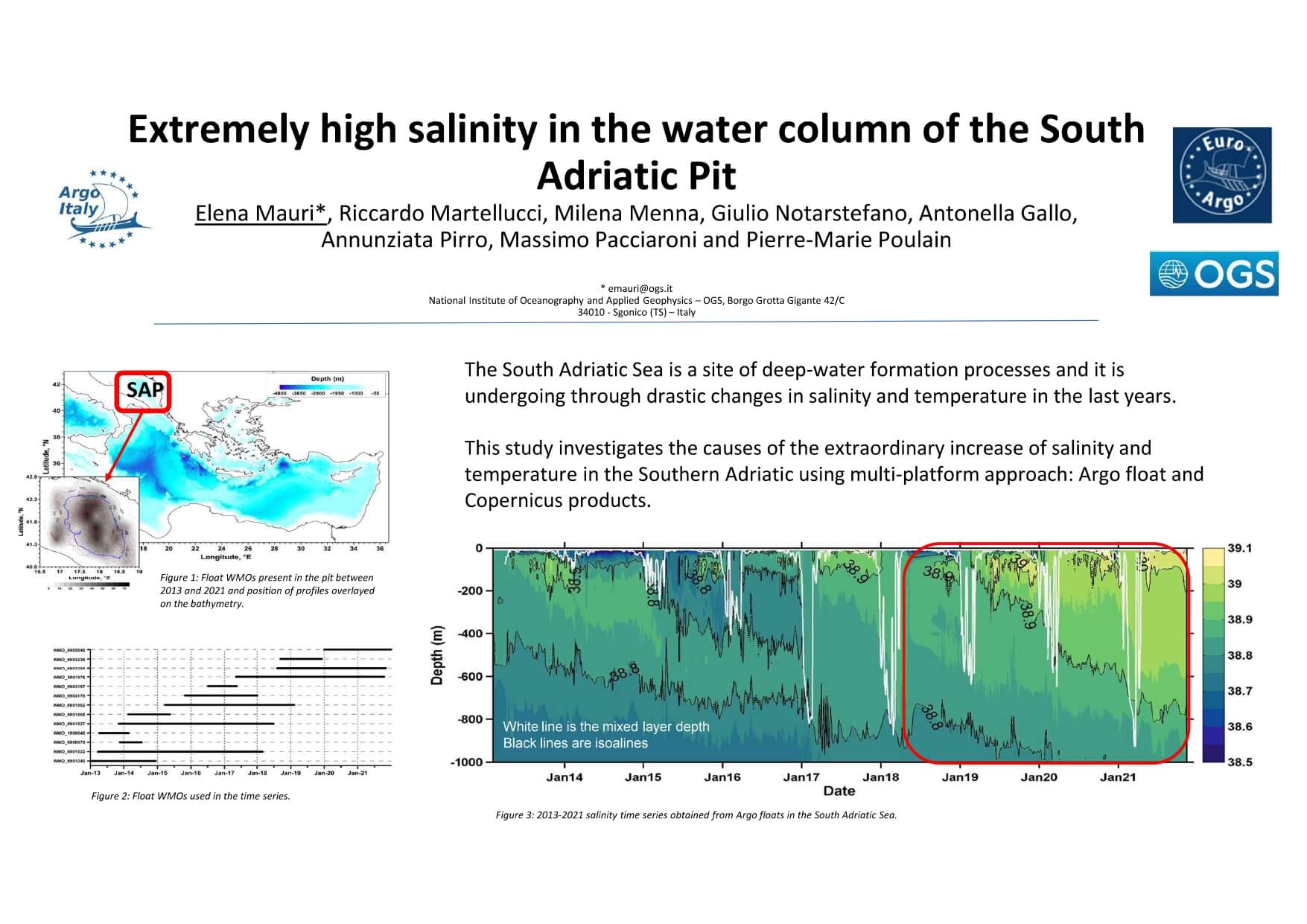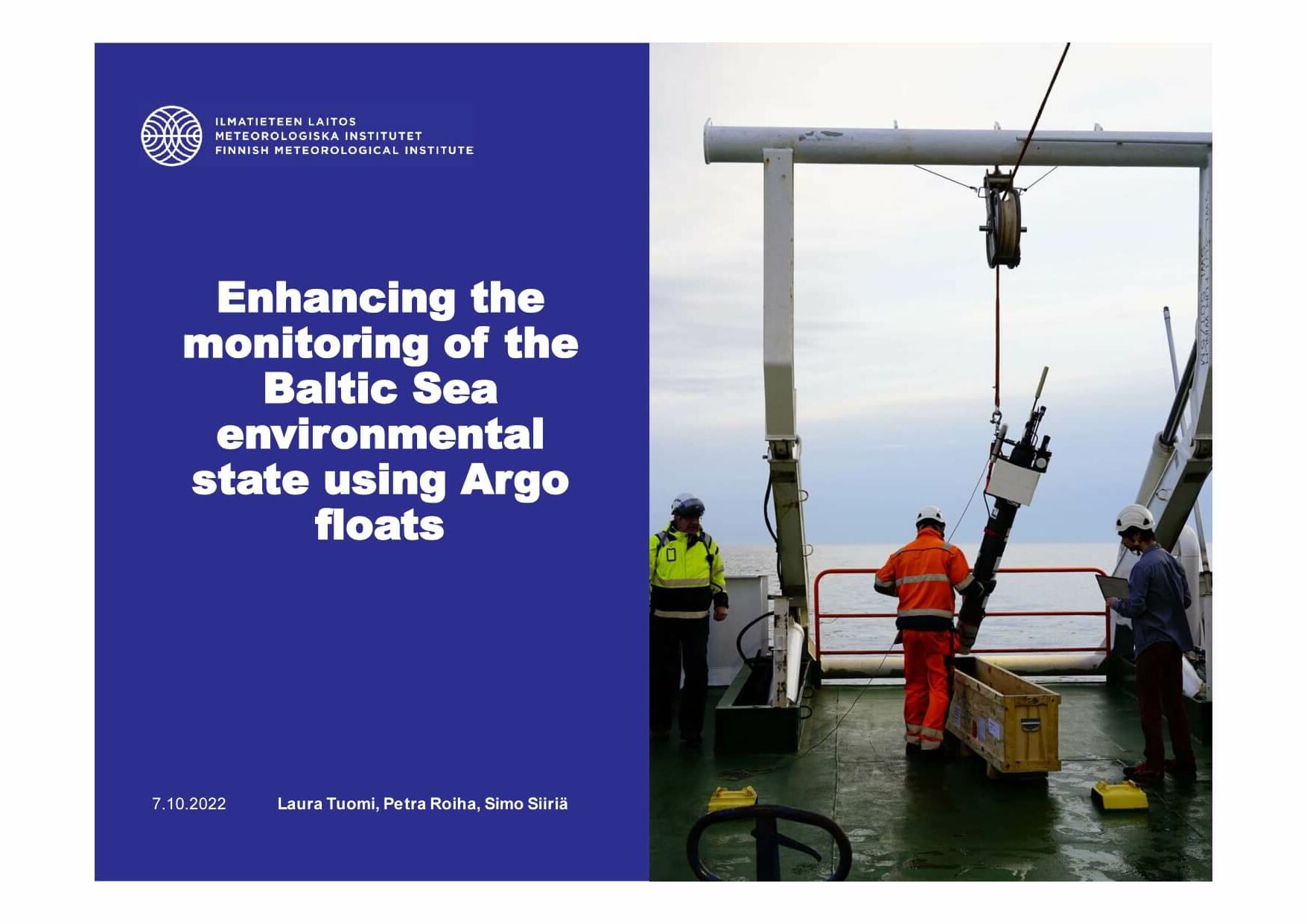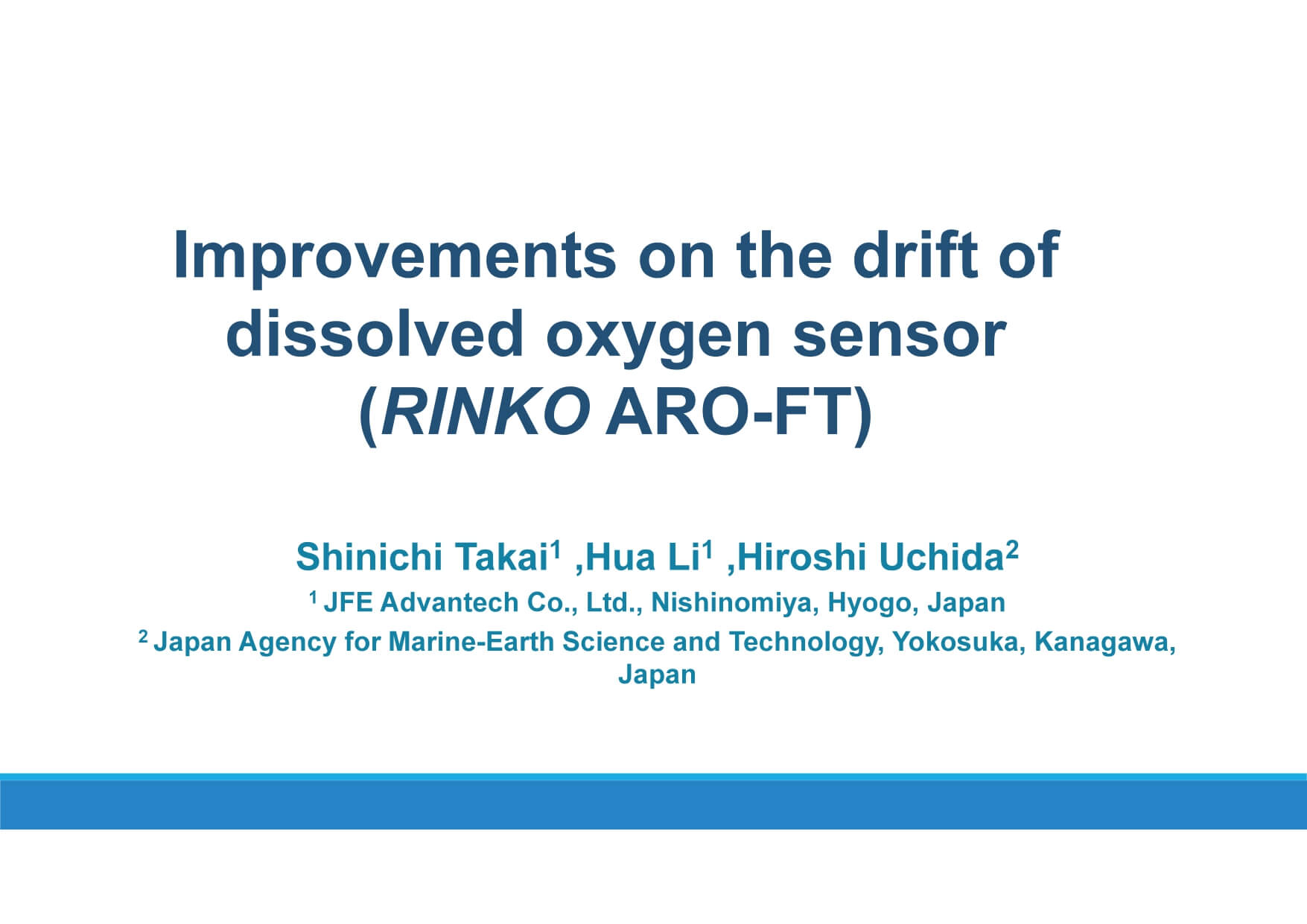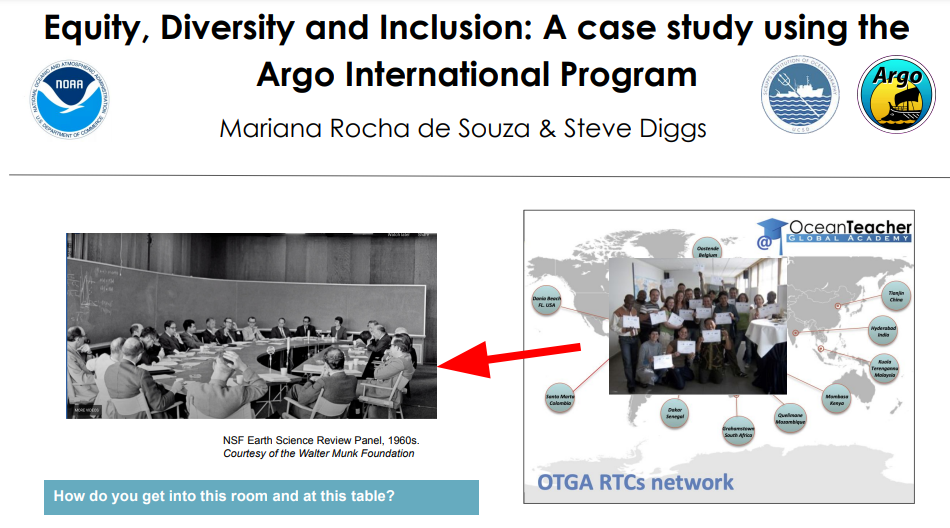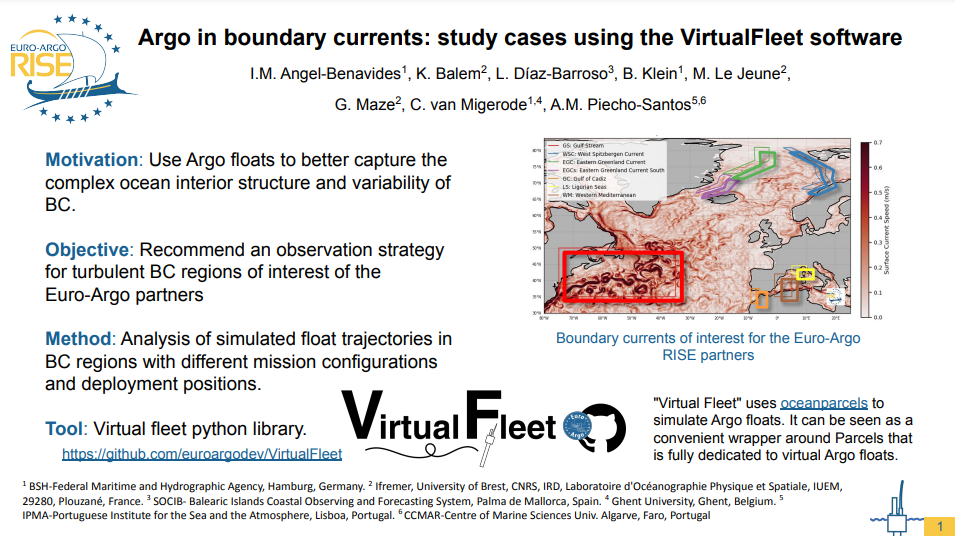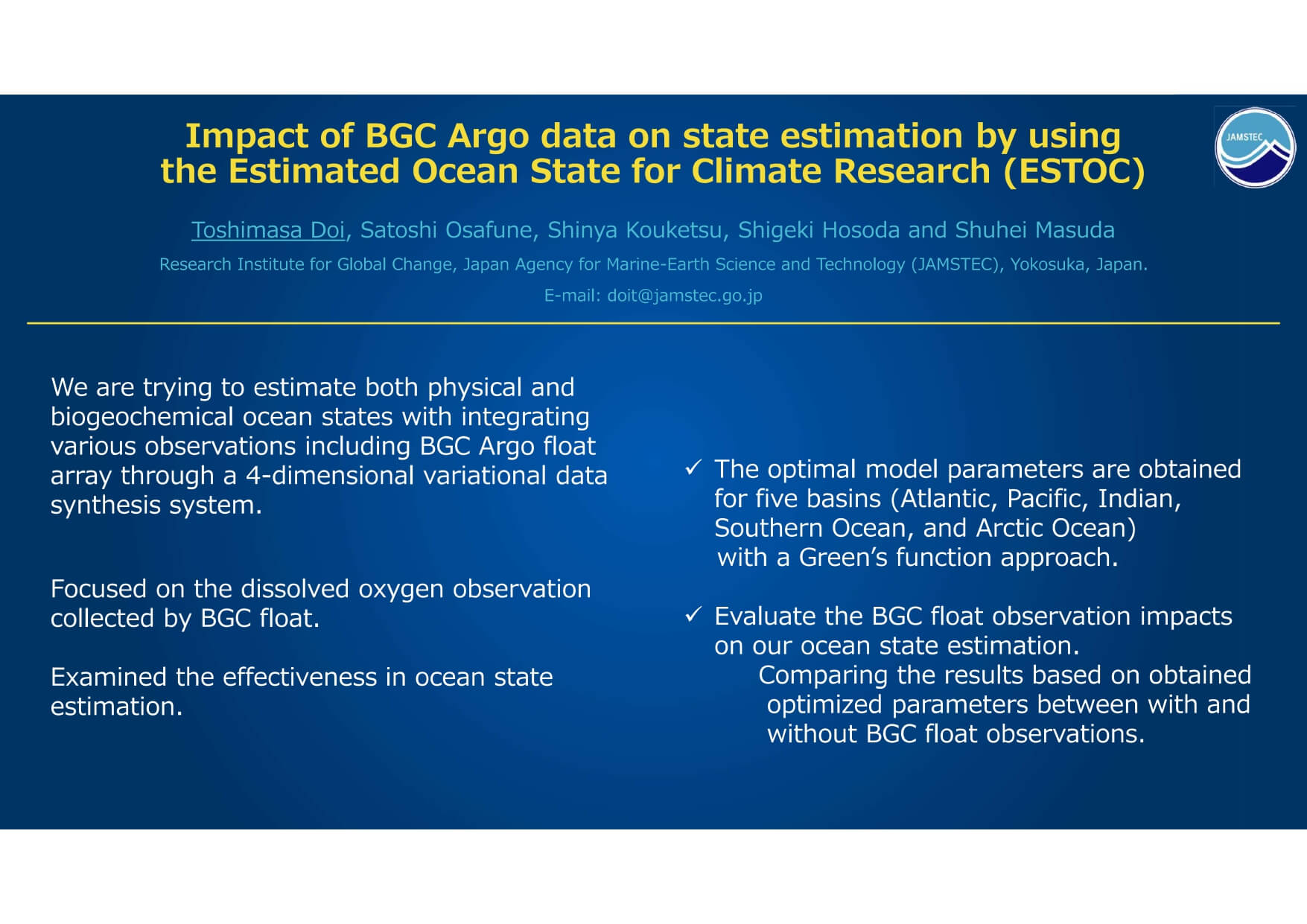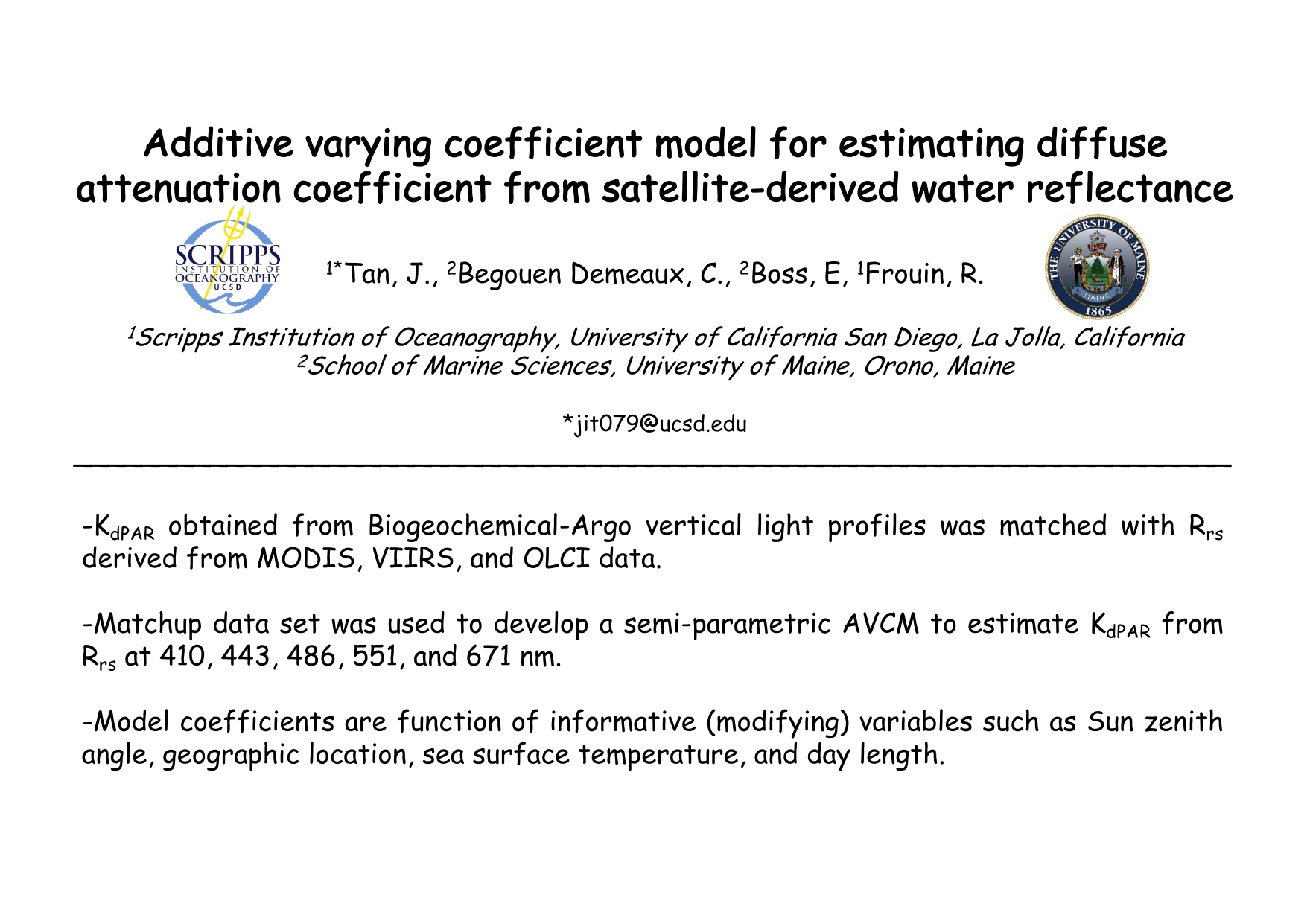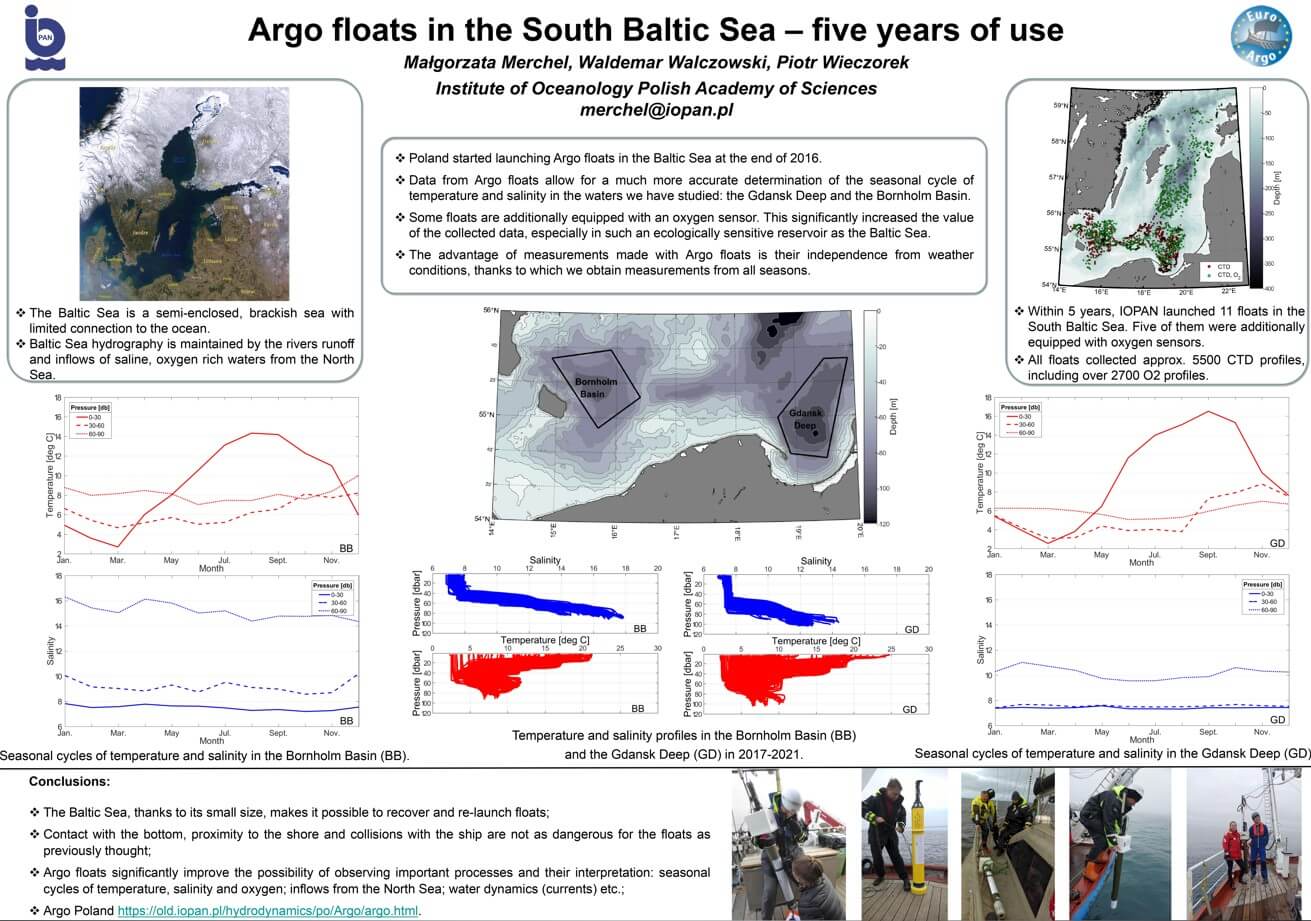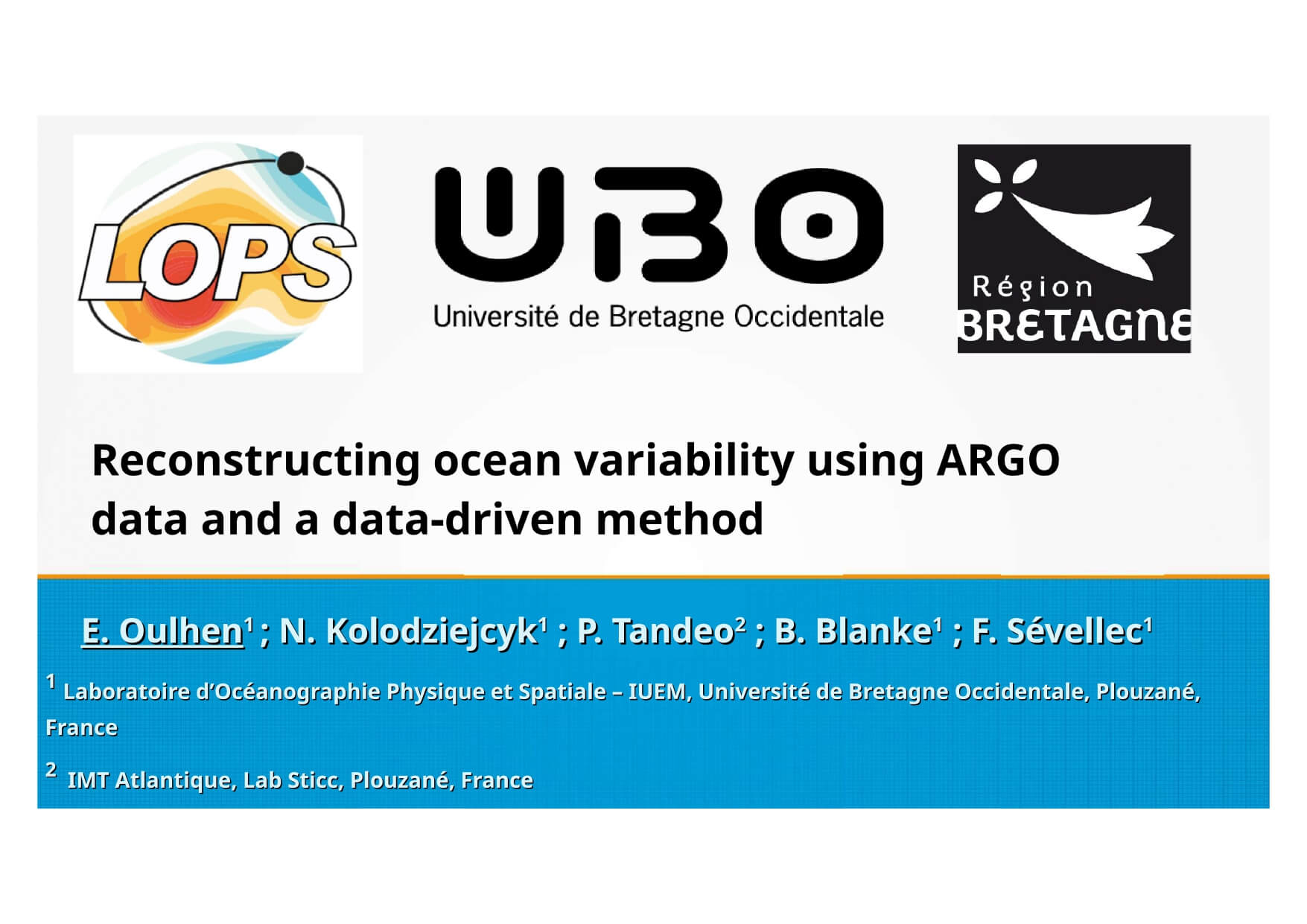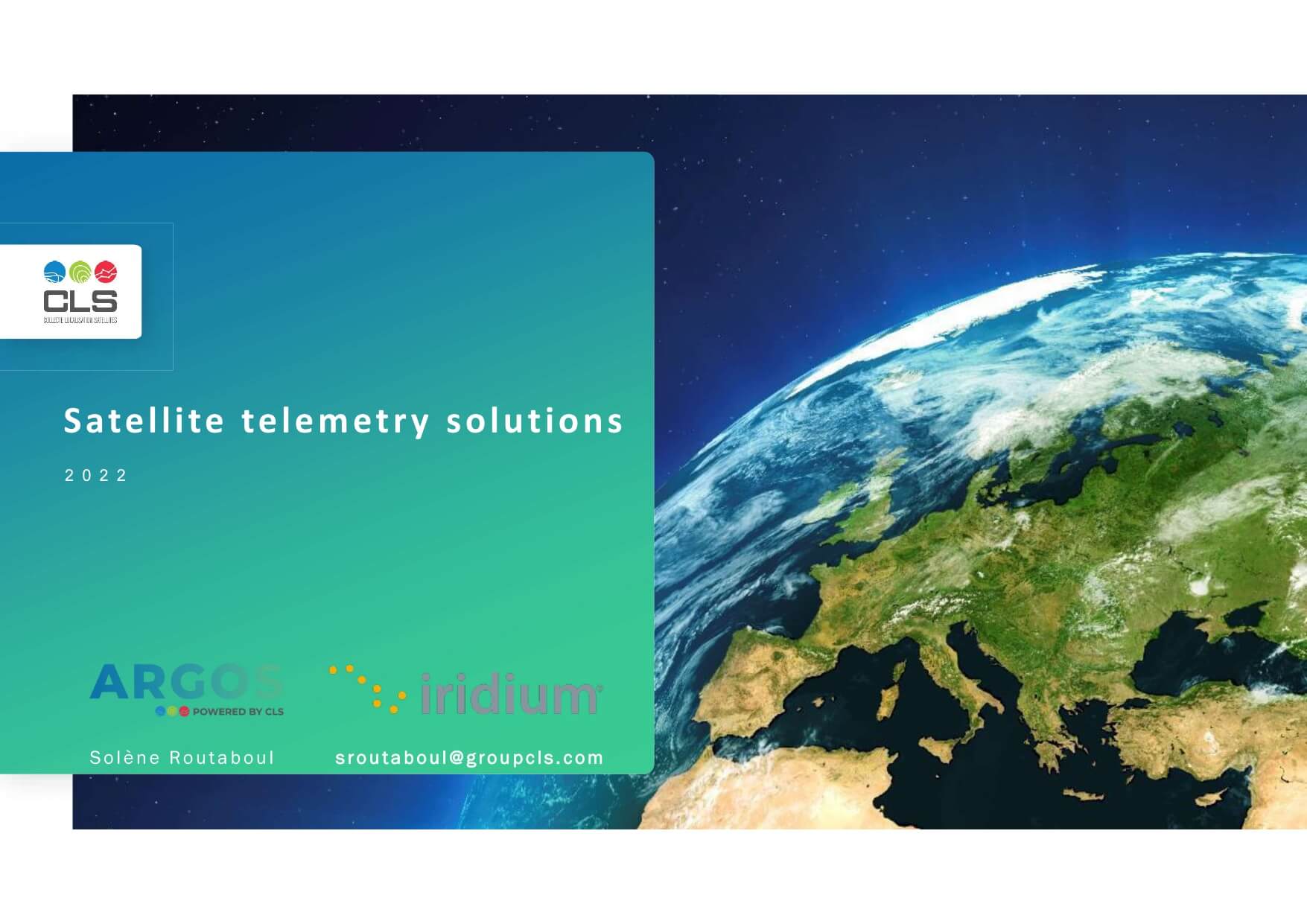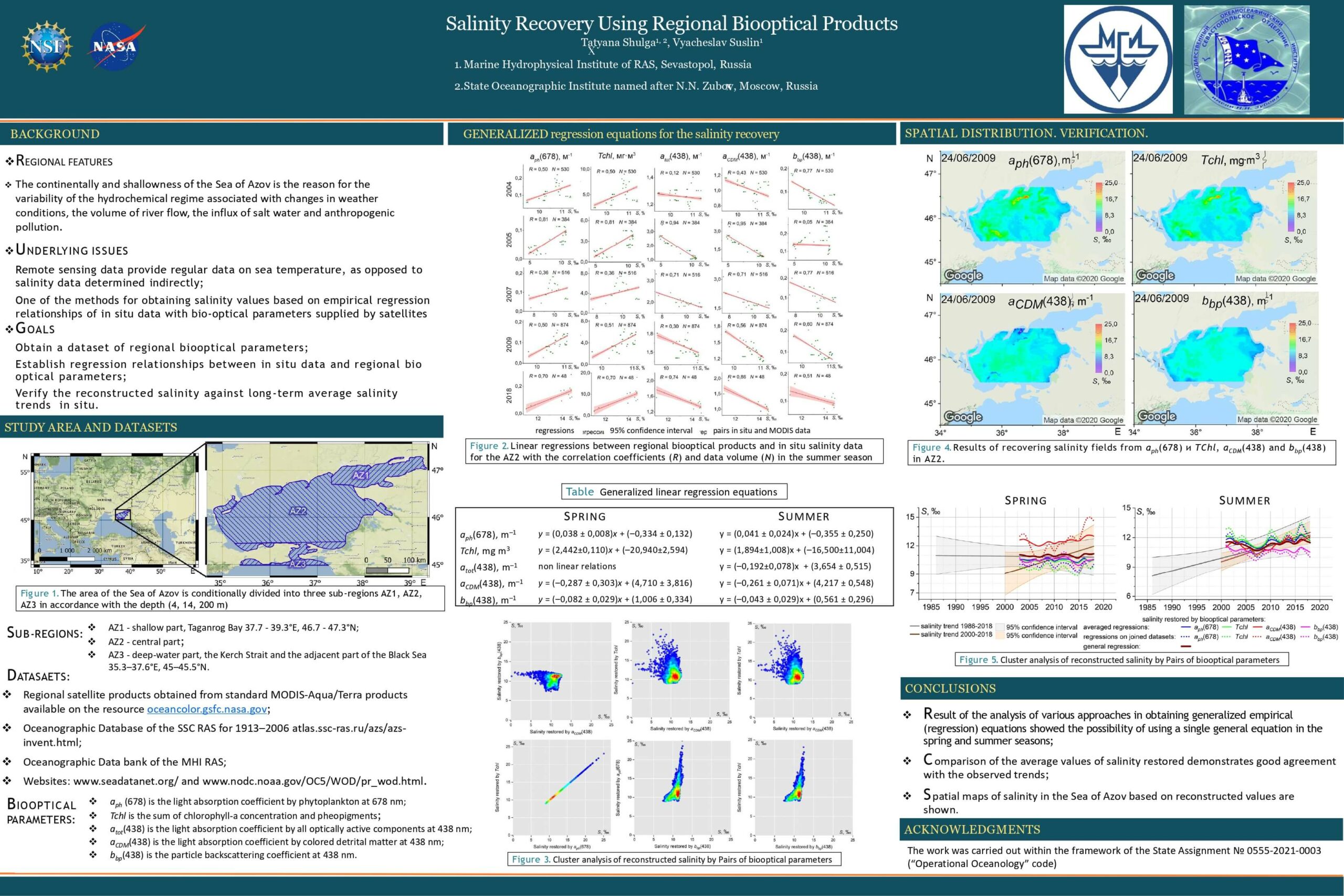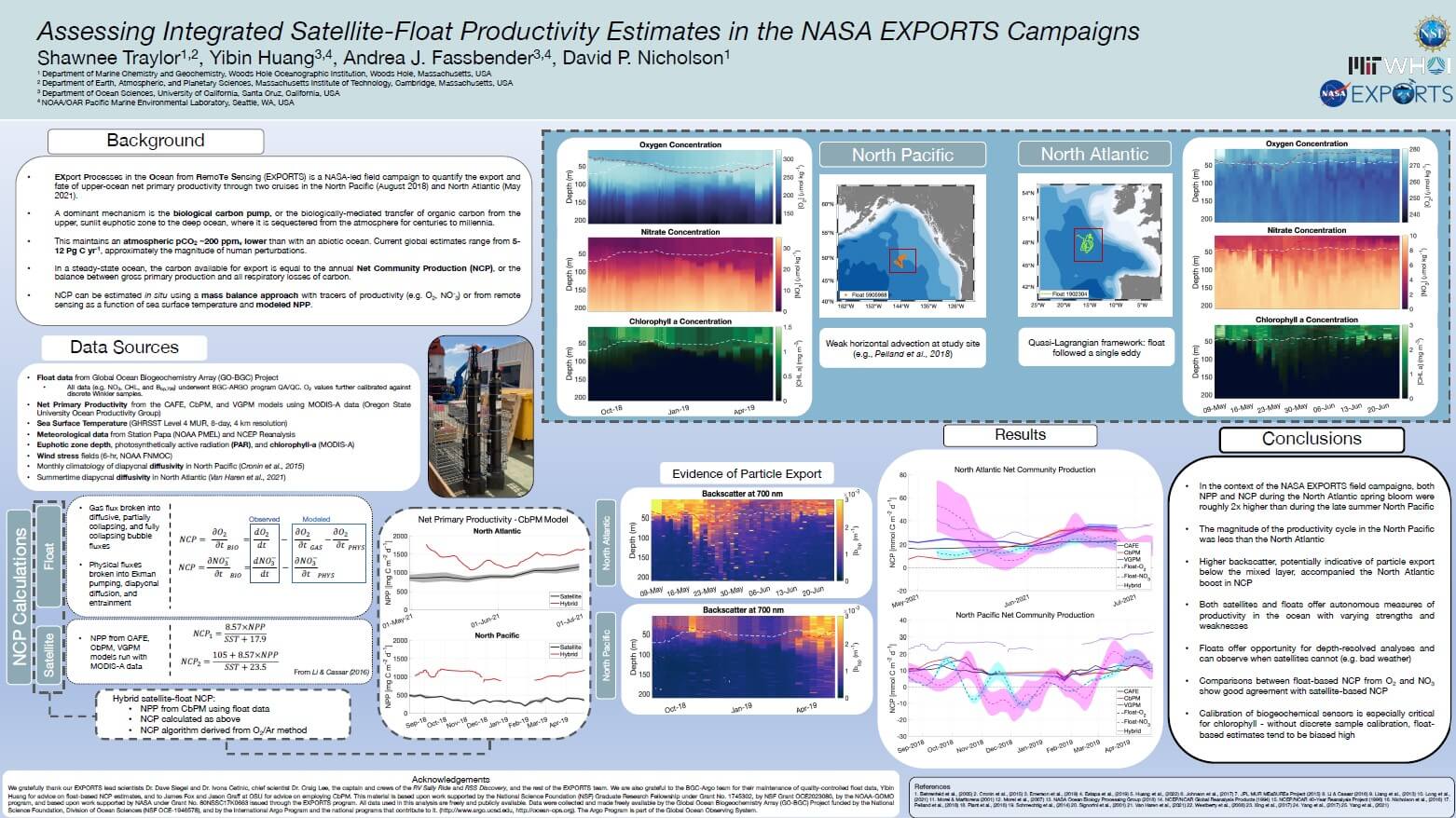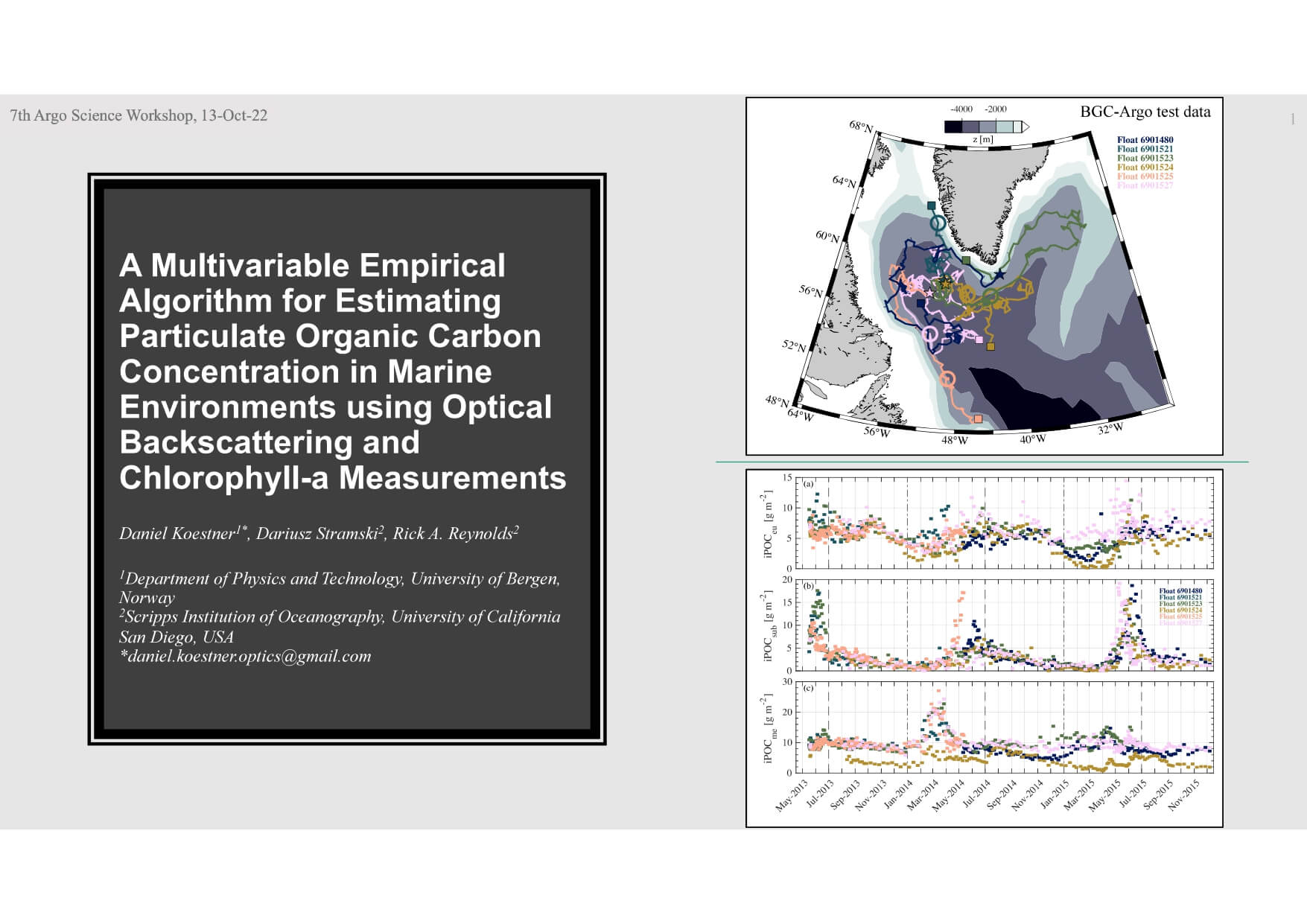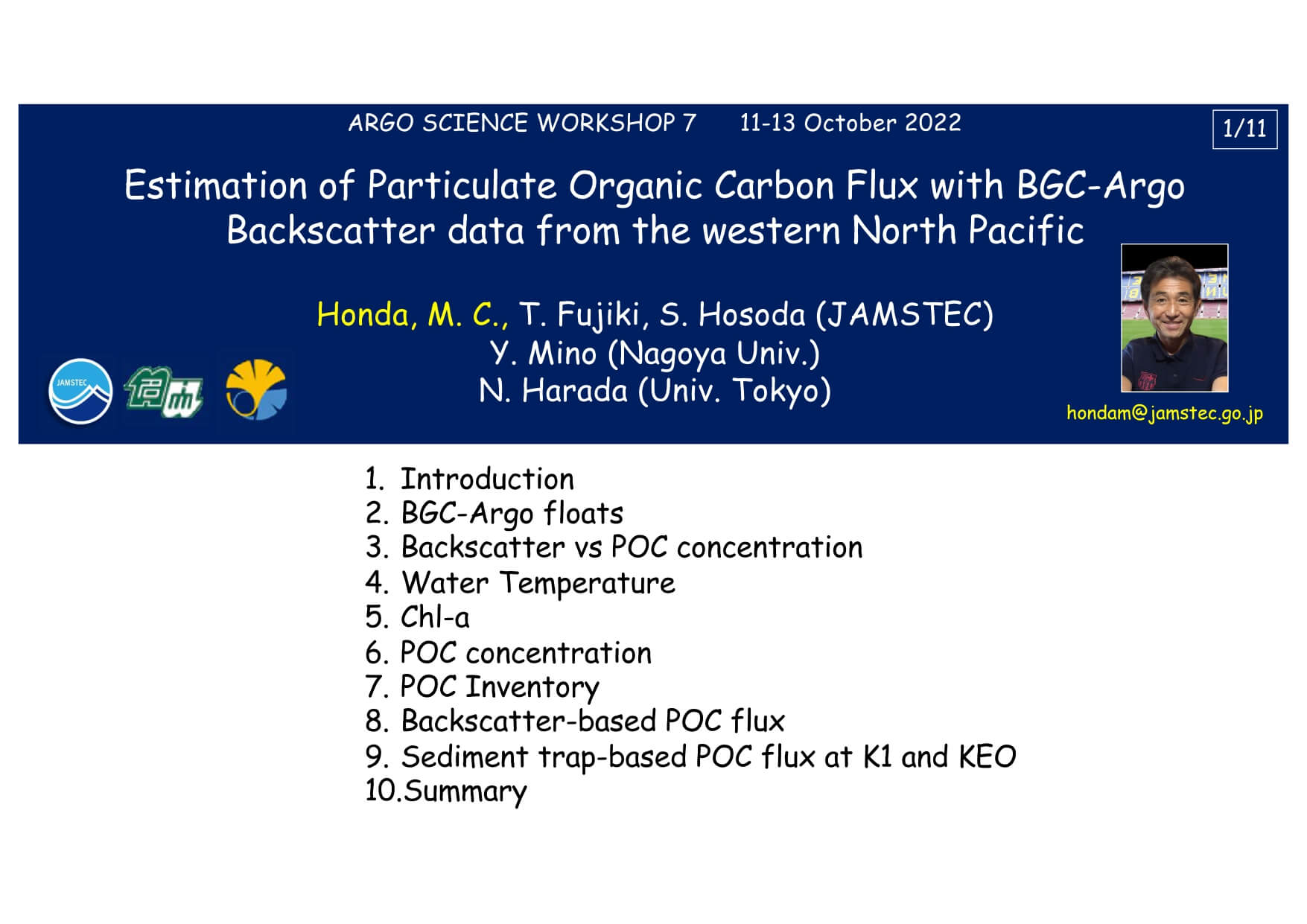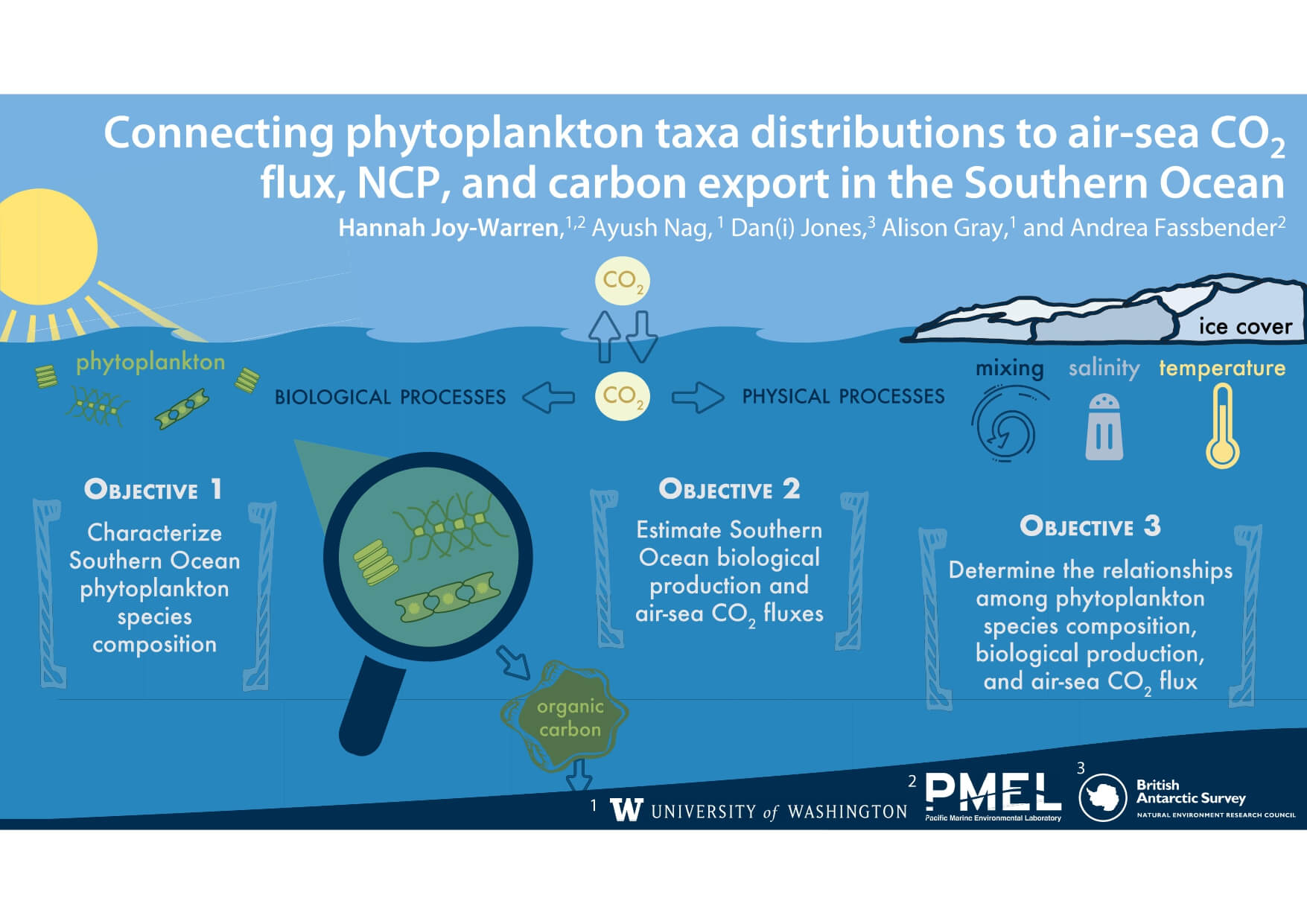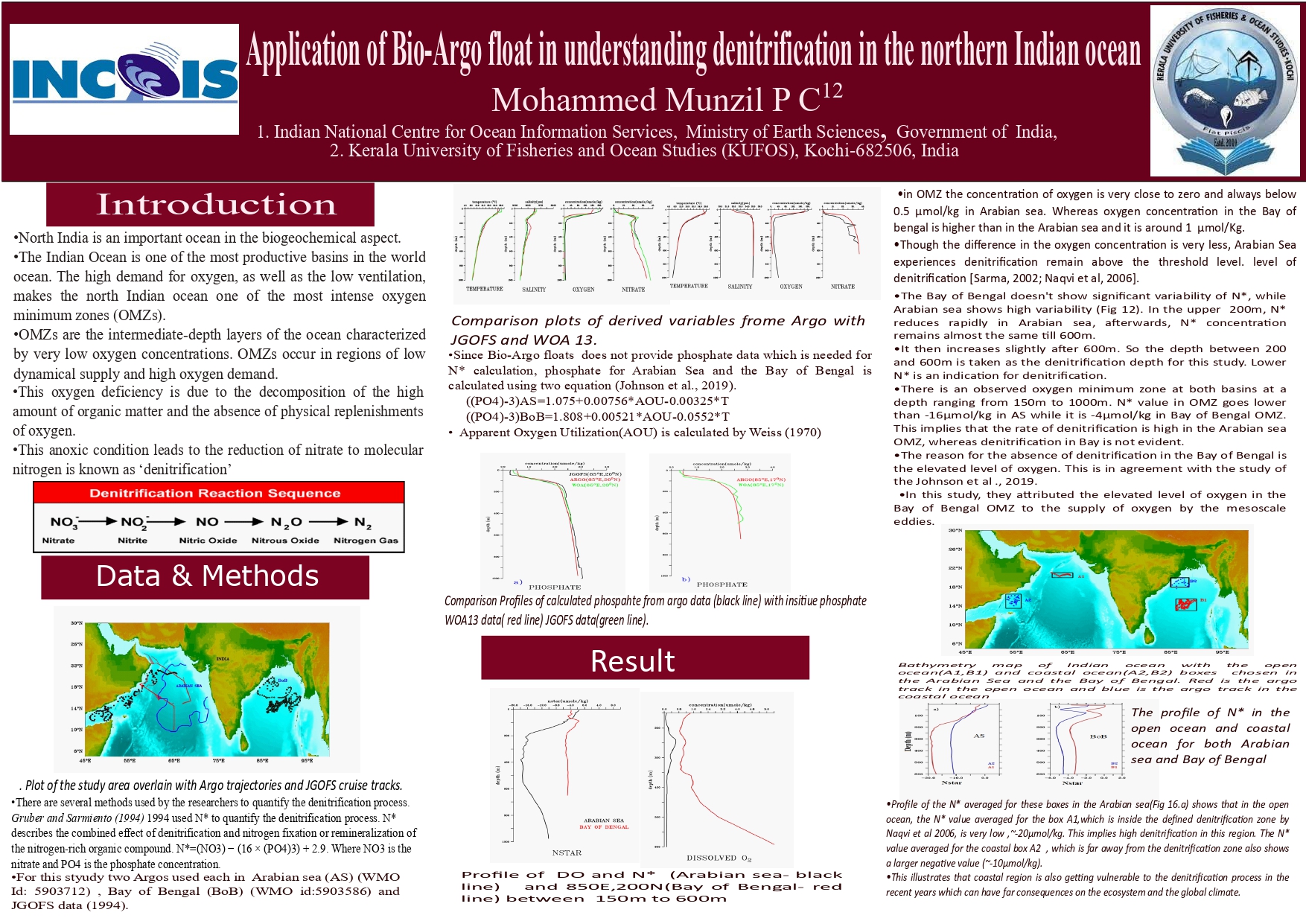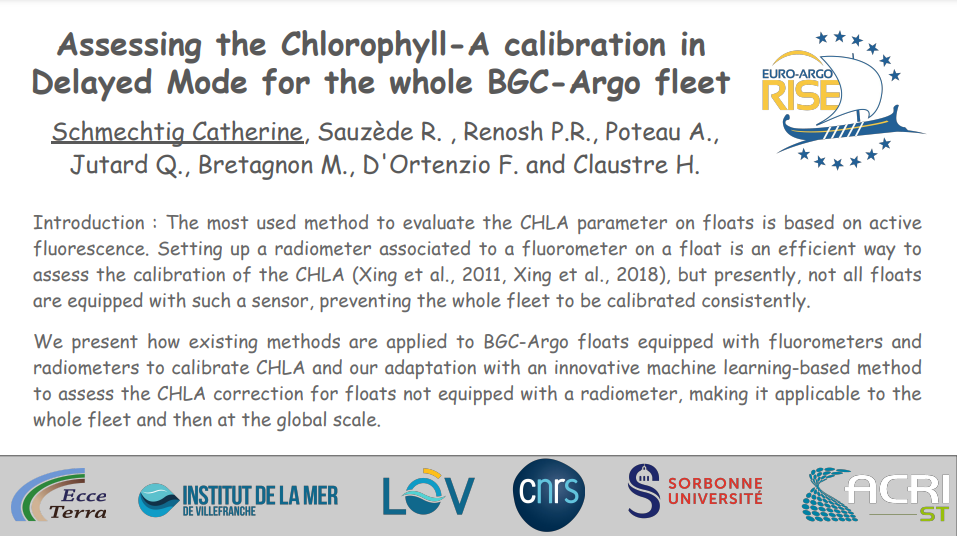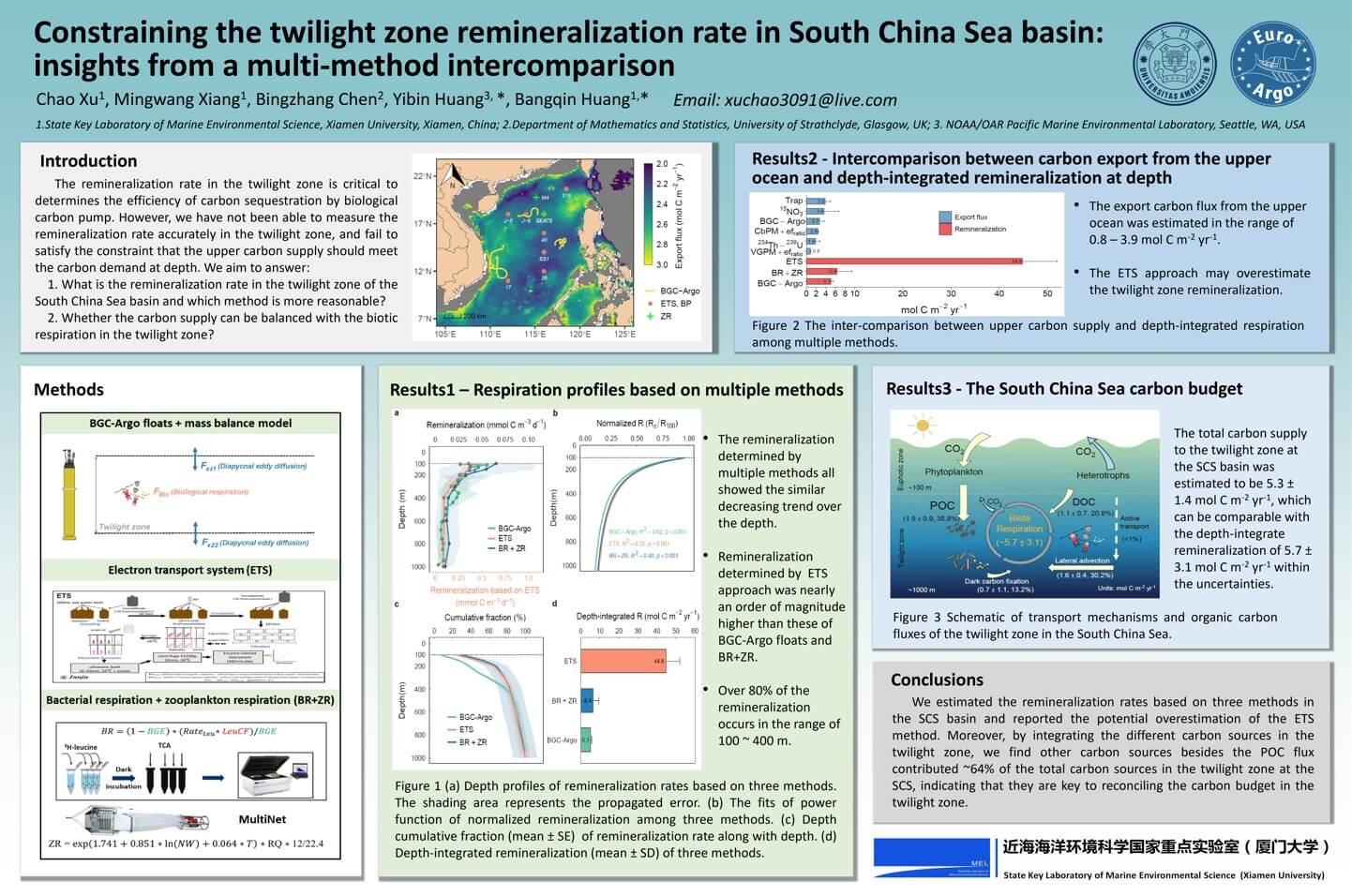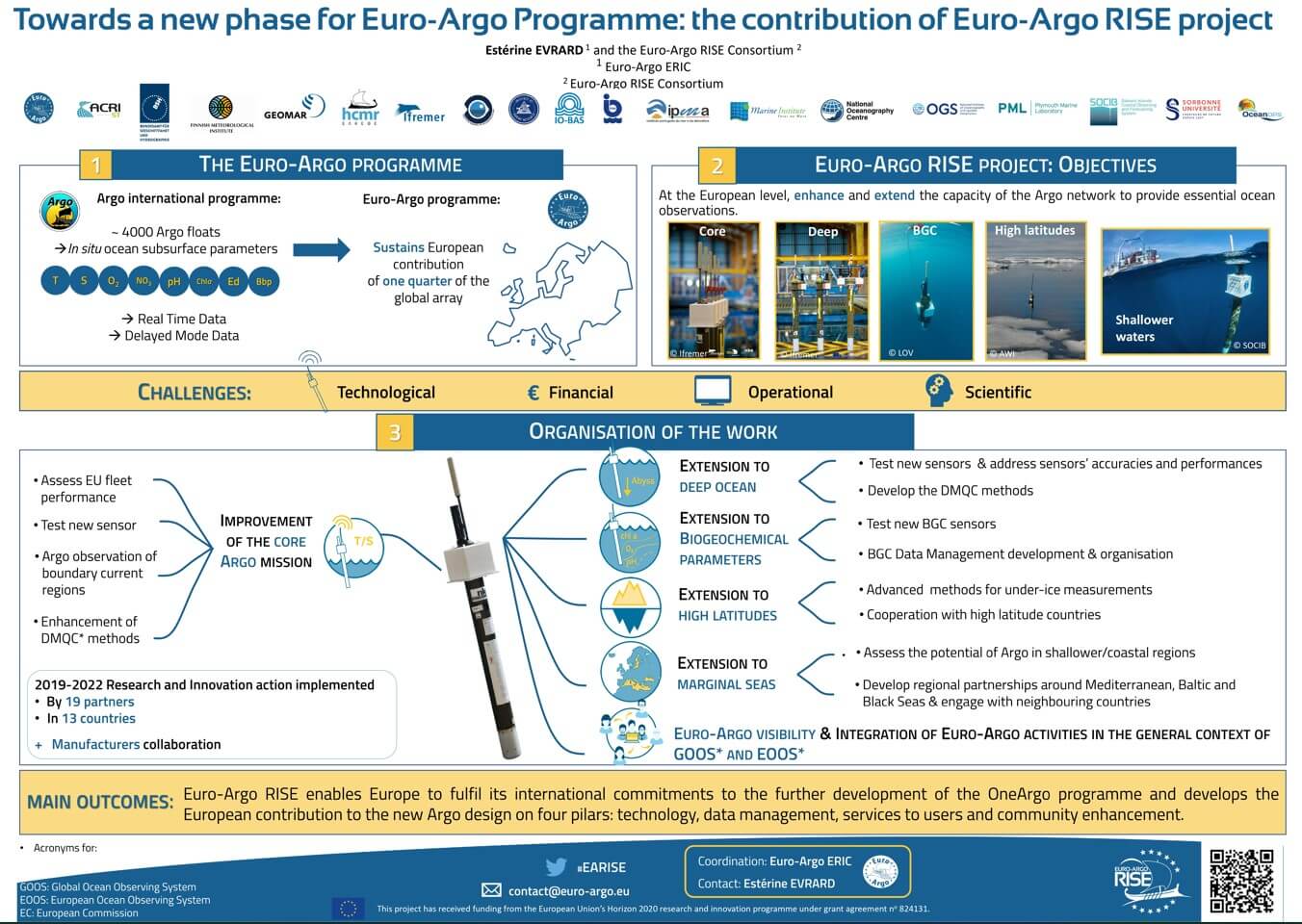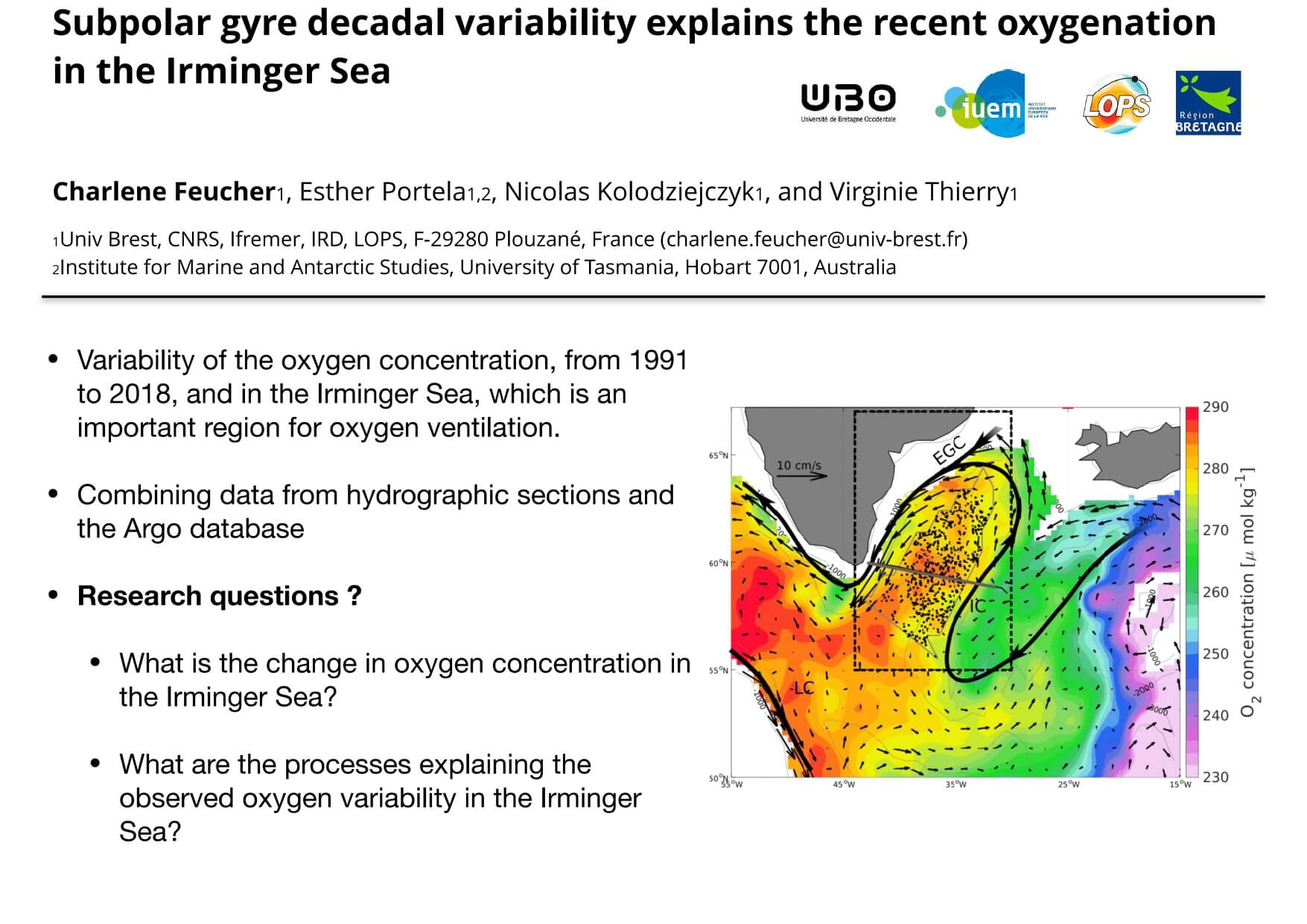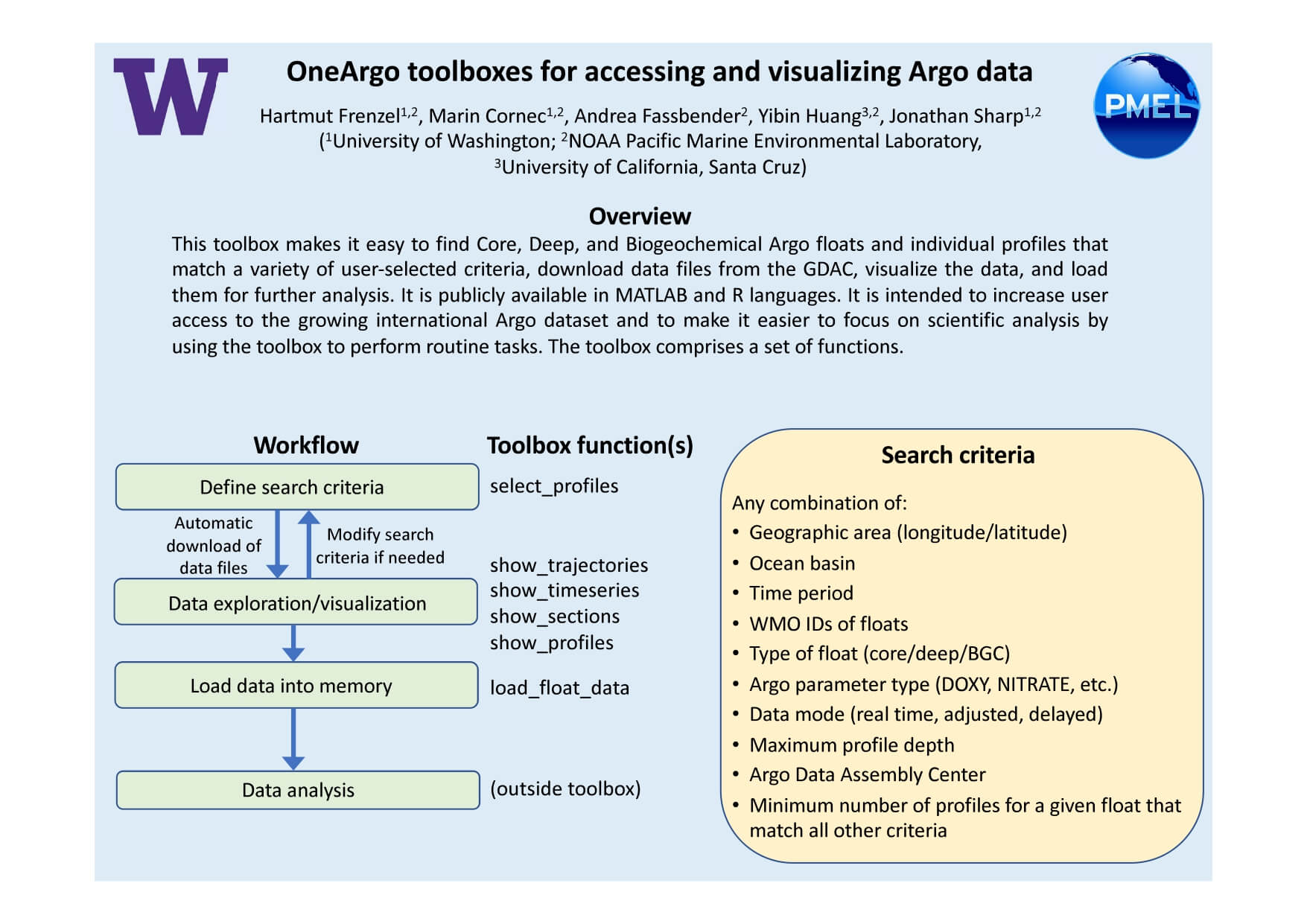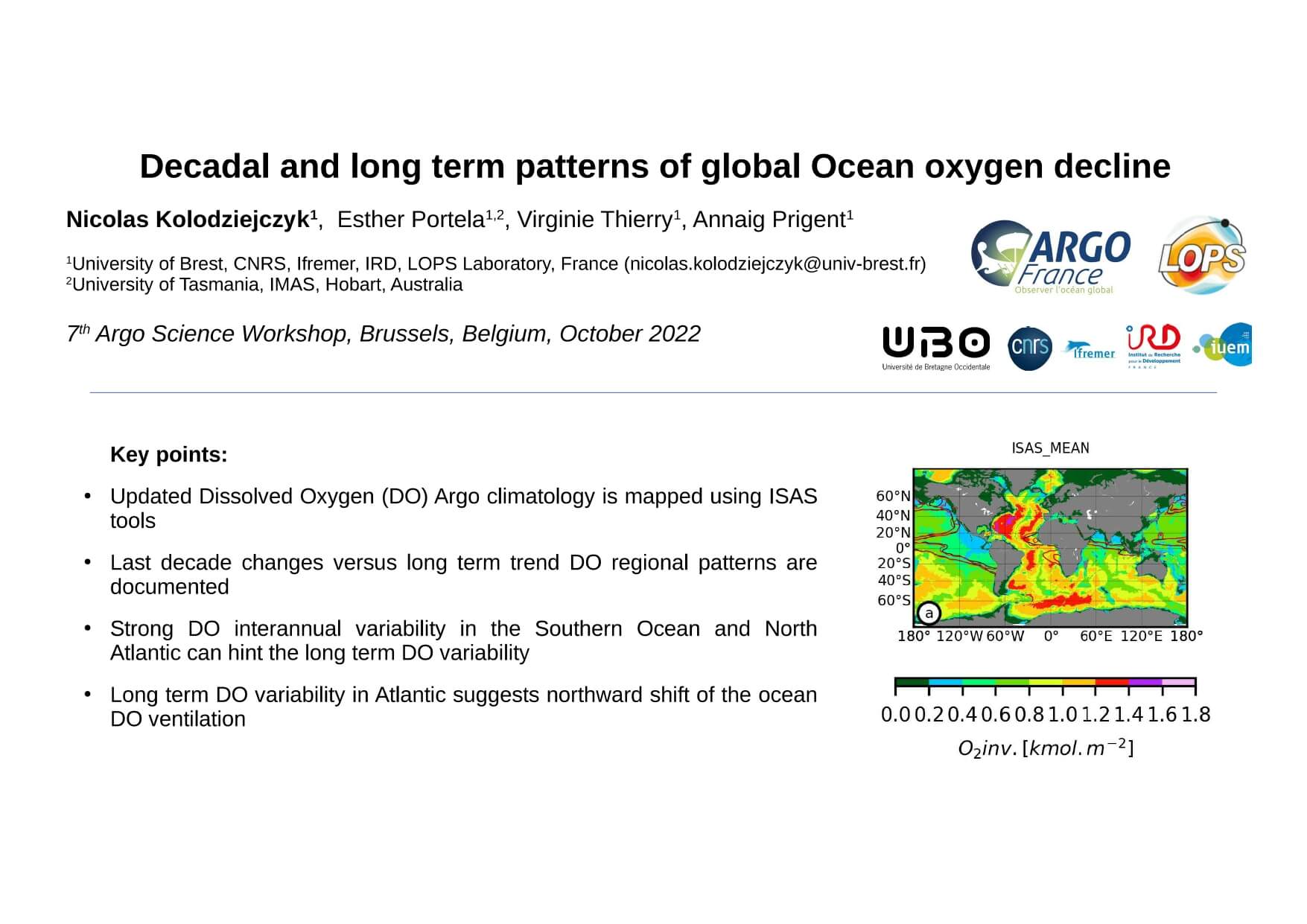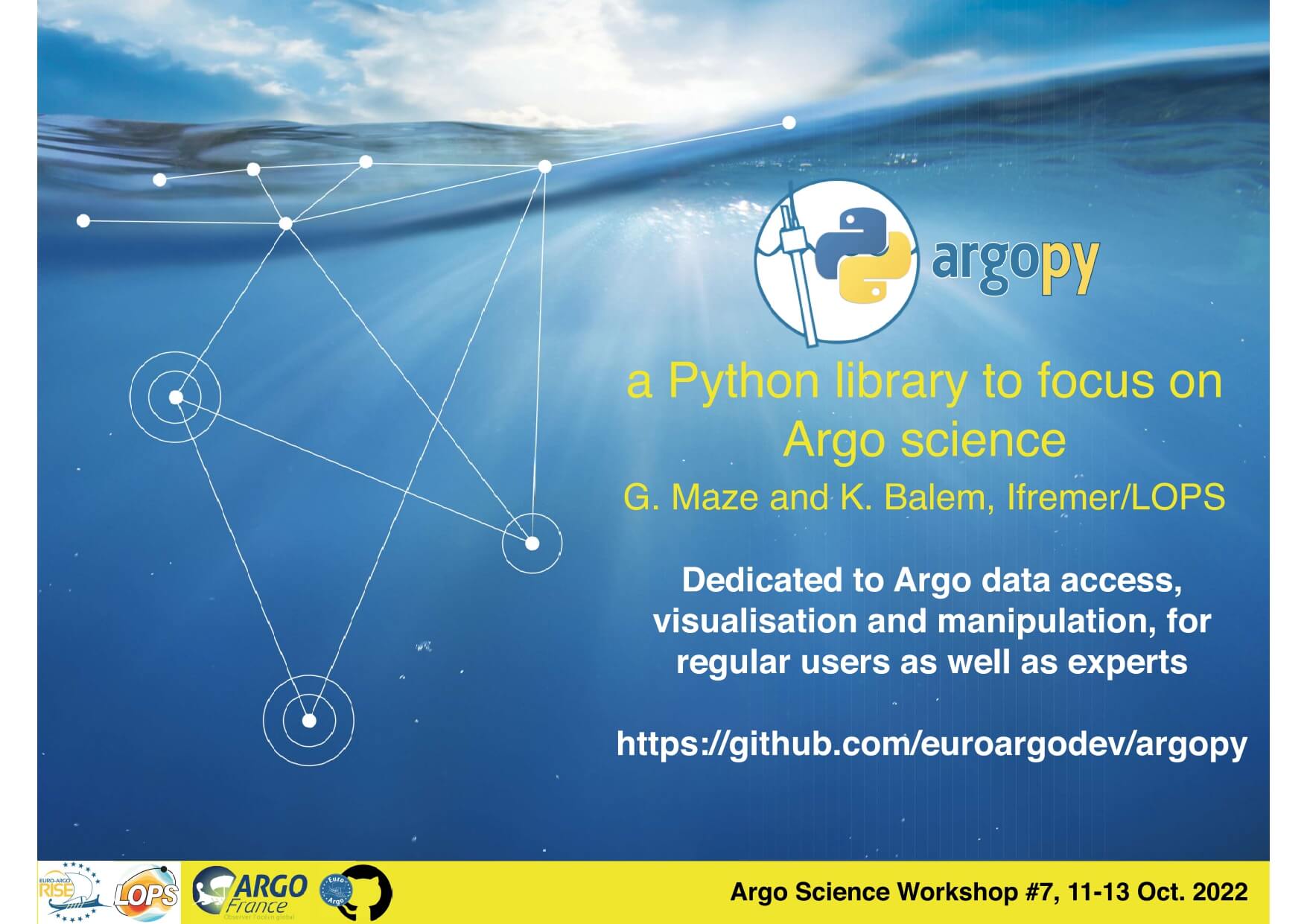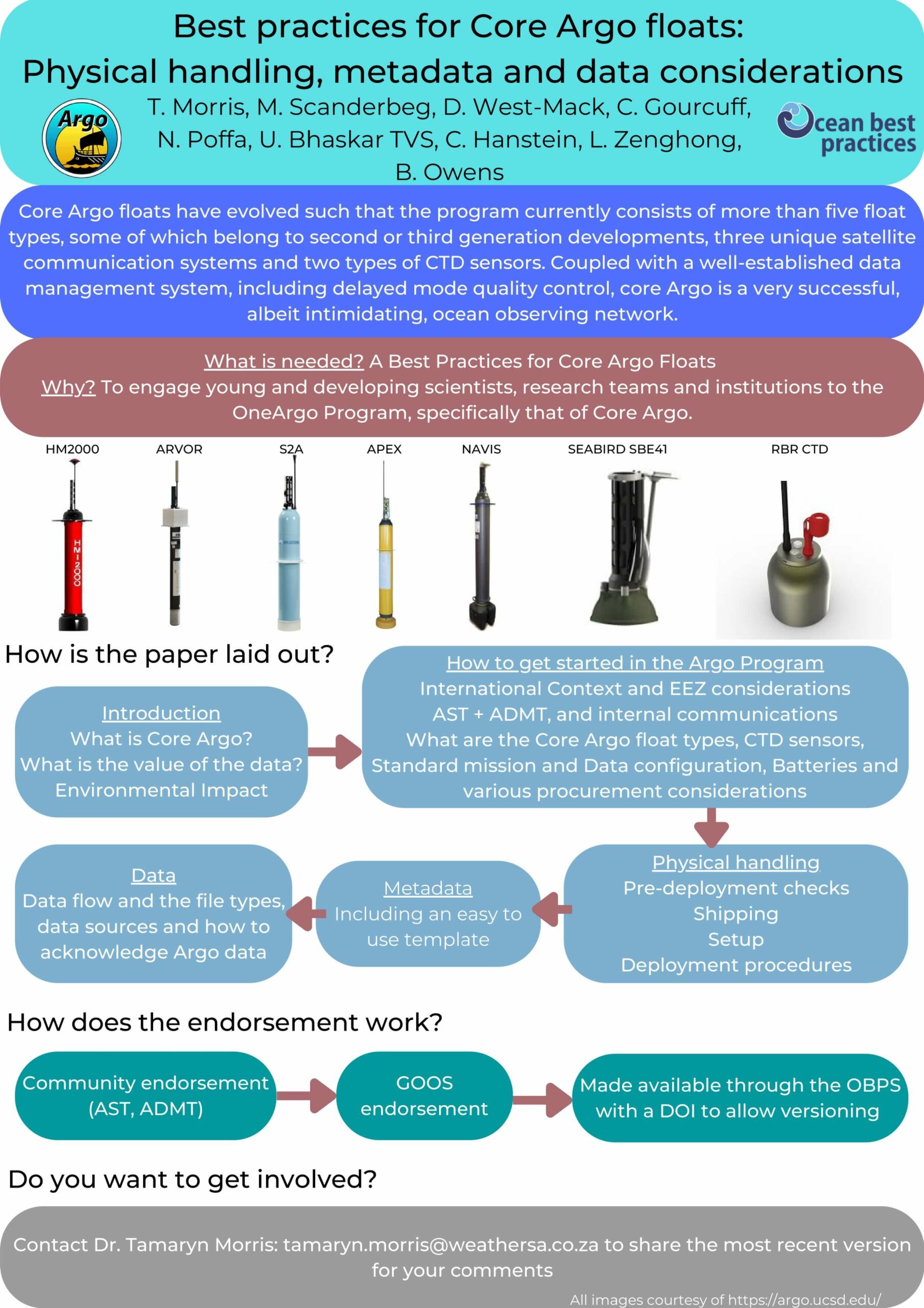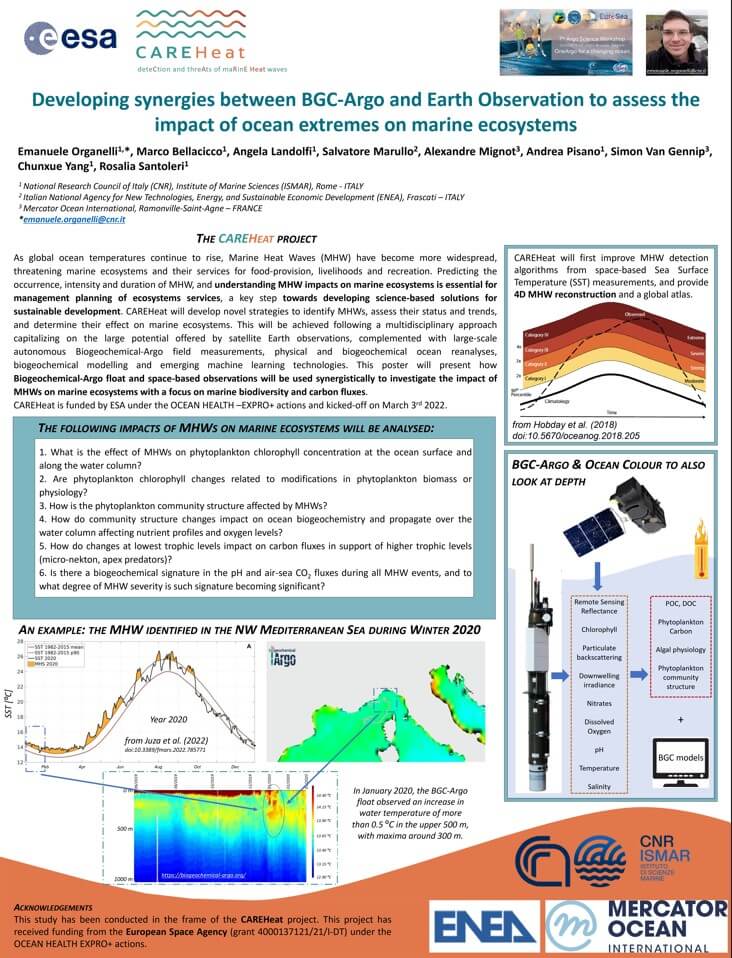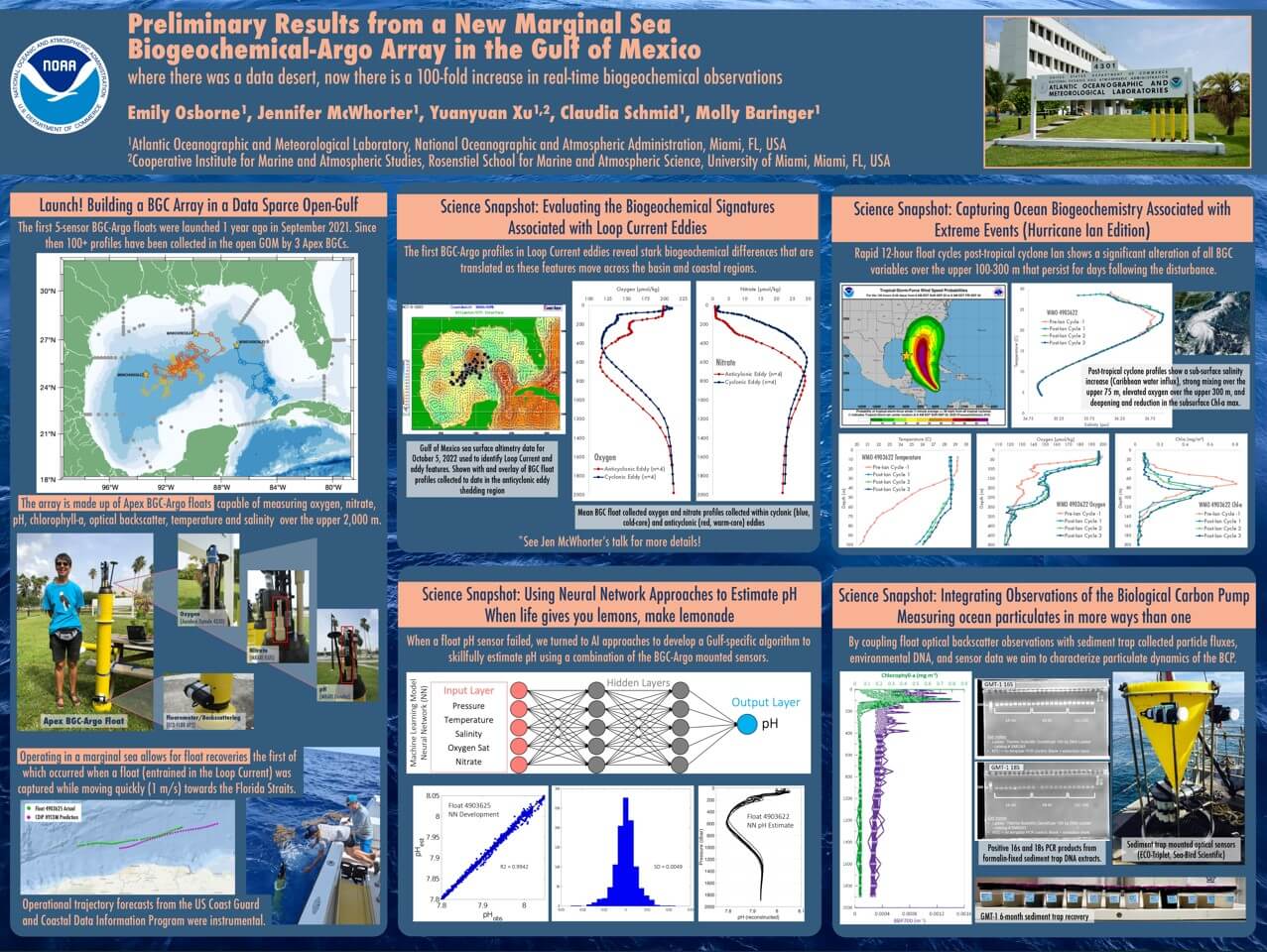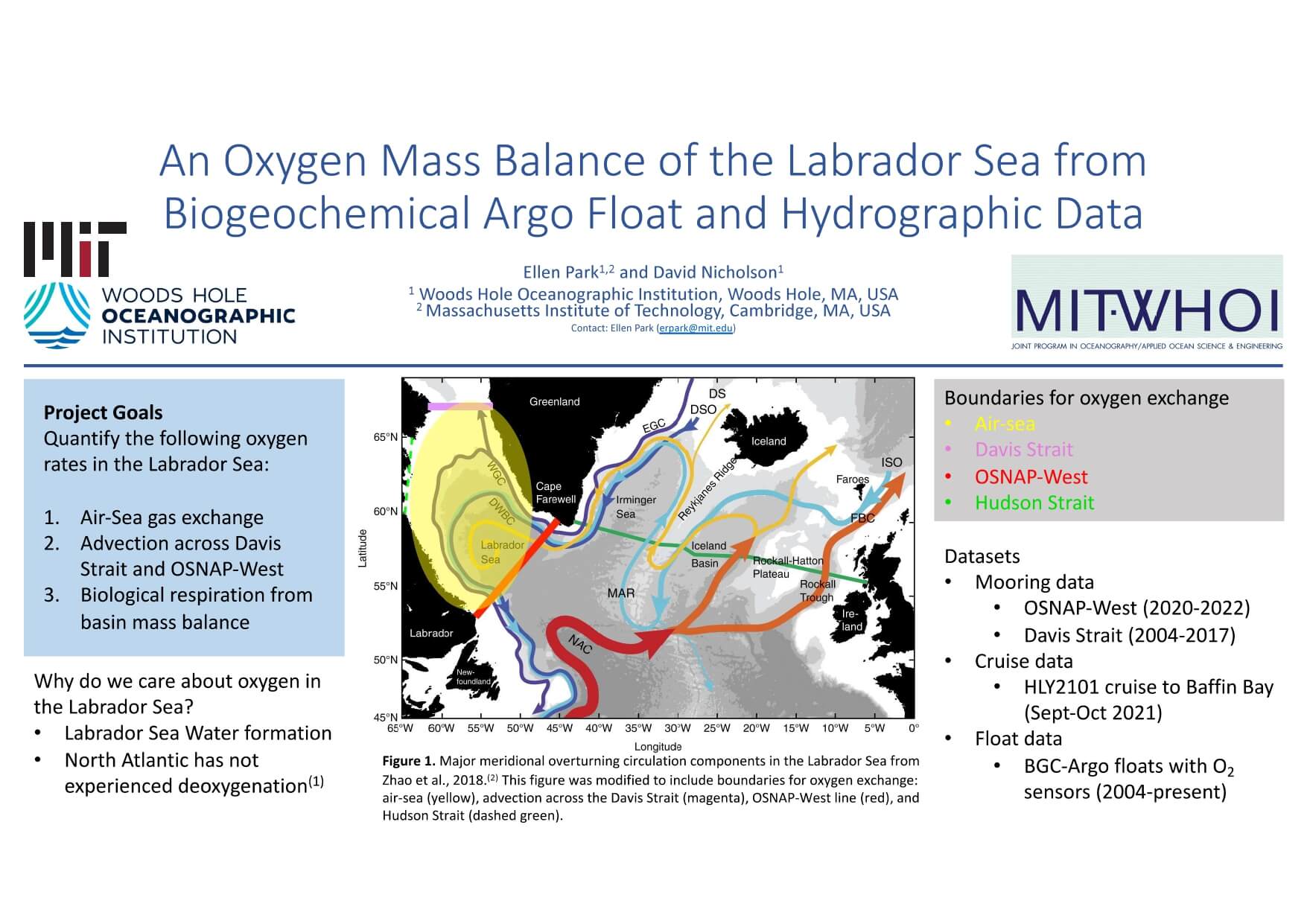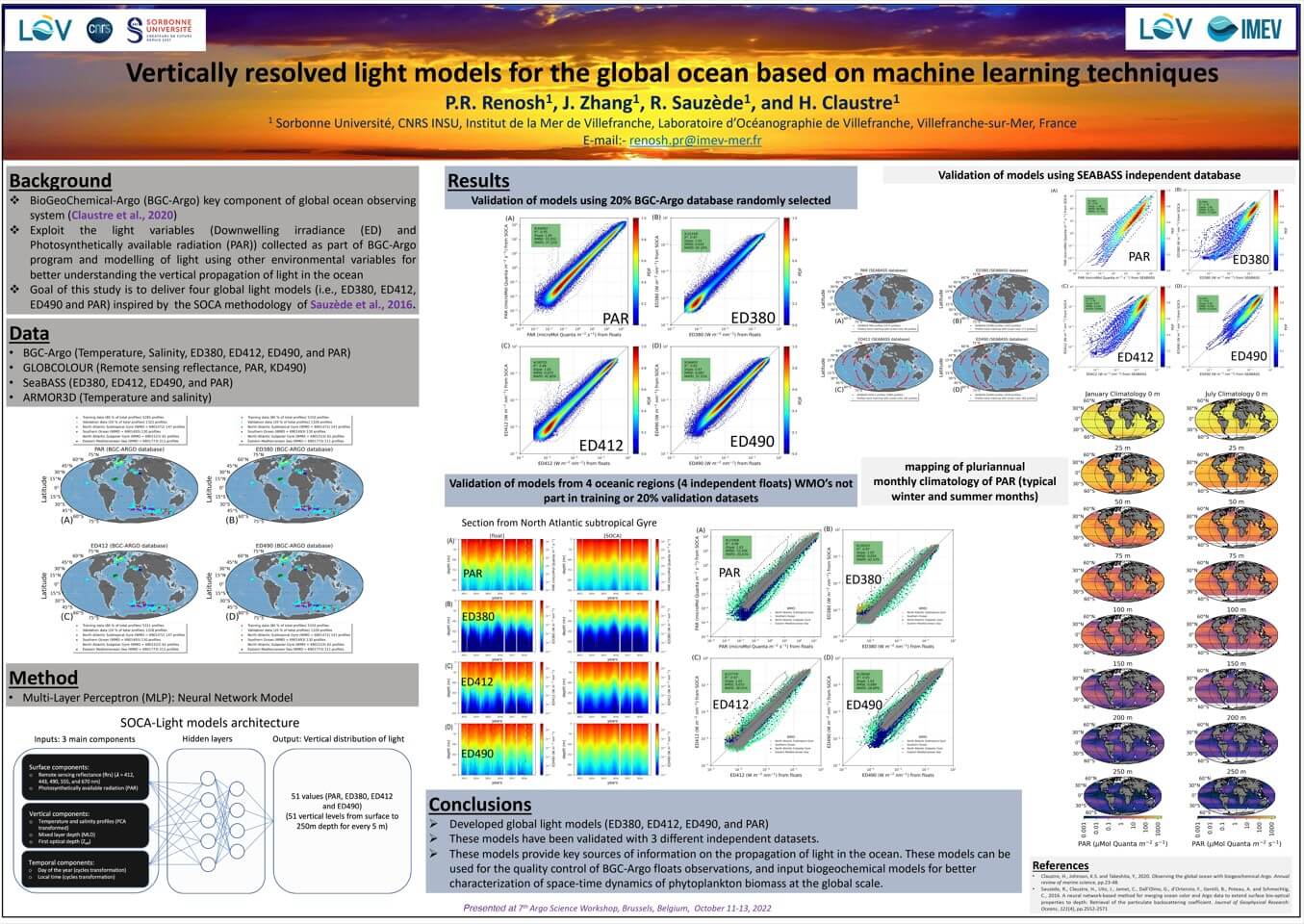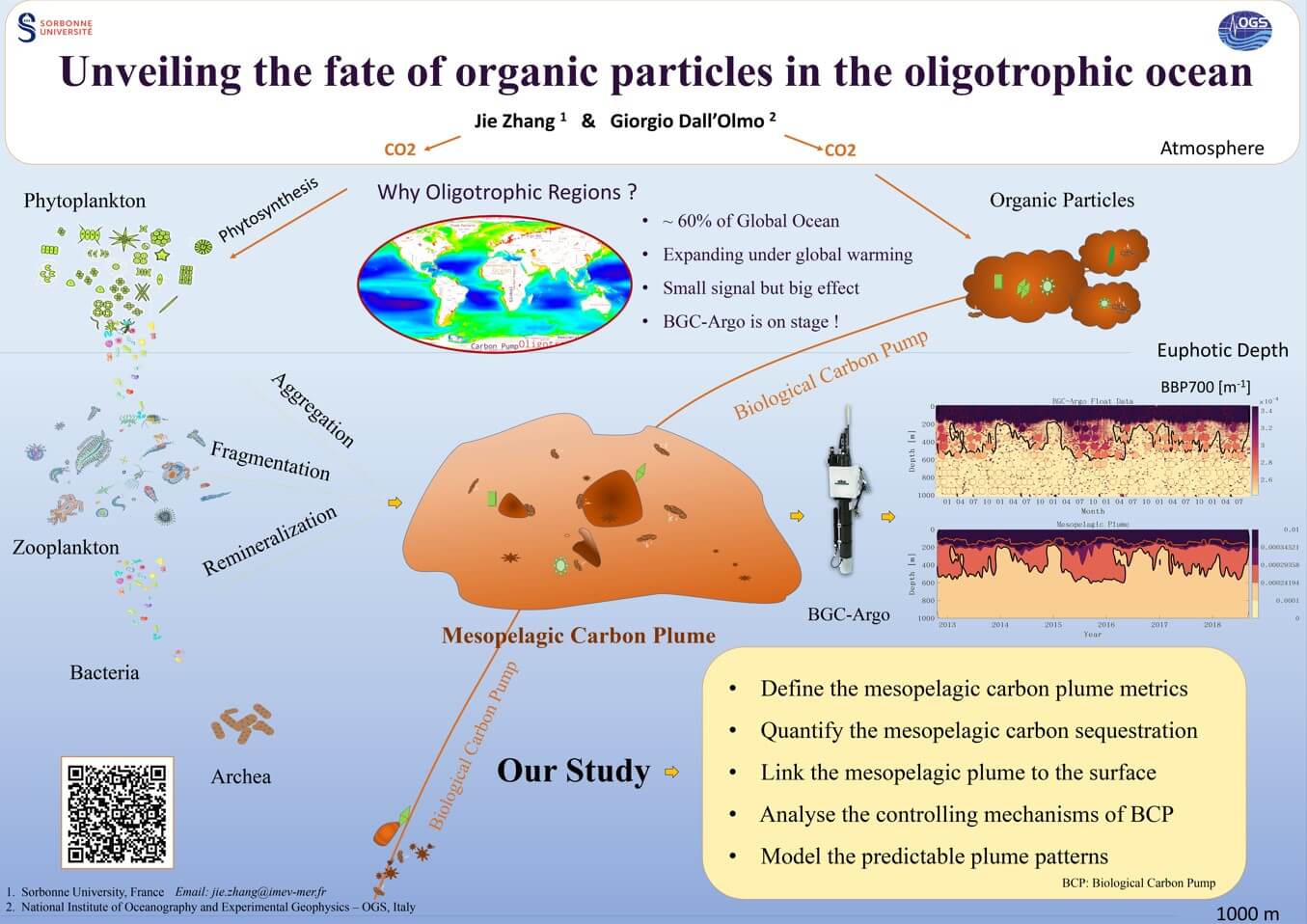Virtual Poster Area
Welcome to the poster area.
The posters will be 100% virtual.
Posters are available during the whole conference, but the authors will be available for Q&A sessions only in the “Poster and area discussion” reachable through the Discord server.
You will find below all the posters. The “See The Poster” button allows you to see the full version of the poster and the “See the flash presentation” button allows you to see the authors’ presentation. A discussion tool is available for questions to the authors.
You can follow the tutorial how to use Discord if this software is new to you.
Tuesday 11 October 2022
A01 - JHA (cancelled)
Generation and Assessment of ARGO Sea Surface Temperature Climatology for the Indian Ocean Region
A03 - PAUTHENET
Four-dimensional temperature, salinity and mixed layer depth of the Gulf Stream, reconstructed from remote sensing and in situ observations with neural networks
A04 - JONNAKUTI
Machine Learning-based approach for Delayed Mode quality control of salinity data from Argo floats.
A10 - WOOD/WILLIS
Ocean warming and Greenland ice loss: the case for expanding Argo to Greenland’s continental shelf
A12 - GAO
Internal Wave Imprints on Temperature Fluctuations as Revealed by RapidSampling Deep Profiling Floats
A15 - KOBAYASHI
Salinity bias with negative pressure dependency caused by anisotropic deformation of CTD measuring cell under pressure examined with a dual-cylinder cell model
A16 - PETIT
Deep through-flow in the Bight Fracture Zone and its role in the hydrological evolution of the Irminger Current
A17 - ROGACHEV
Large Oyashio eddy drives interbasin exchange between the Sea of Okhotsk and the subpolar Pacific
A18 - SAMBE
Classification of Argo Profiles in the Midlatitude Northwest Pacific Ocean by Unsupervised Clustering and Their Potential Use
Wednesday 12 October 2022
B01 - FERNANDEZ CASTRO
Lagrangian pathways for heat, carbon and nutrients subduction with sub-antarctic mode waters
B05 - KIDO
An introduction of newly developed eddyresolving quasi-global ocean reanalysis product -JCOPE-FGO
B09 - ROCHA DE SOUZA
Equity, Diversity, and Inclusion: A case study using the Argo International Program
B11 - DOI
Impact of BGC Argo data on state estimation by using the Estimated Ocean State for Climate Research (ESTOC)
B12 - FROUIN
Additive varying coefficient model for estimating diffuse attenuation coefficient from satellite-derived water reflectance
Thursday 13 October 2022
C01 - IZETT
Expanding the global coverage of gross primary production and net community production using biogeochemical profiling floats
C02 - KOESTNER
A multivariable empirical algorithm for estimating particulate organic carbon concentration in marine environments from optical backscattering and chlorophyll-a measurements
C03 - GIDUGU
Estimation of Seasonal changes in Vertical distribution of phytoplankton biomass in Tropical Indian Ocean from Bio-Argo and remote sensing observations
C04 - AHMED
Oxygen saturations of the Northwest Pacific subsurface waters using an array of Argo floats
C05 - HONDA
Estimation of Particulate Organic Carbon Flux with BGC-Argo Backscatter data from the Western North Pacific
C06 - JOY-WARREN
Connecting phytoplankton taxa distributions to air-sea CO2 fluxes in the Southern Ocean
C07 - MUNZIL
Application of Bio-Argo float in understanding denitrification in the northern Indian ocean.
C09 - XU
Constraining the twilight zone remineralization rate in the South China Sea basin: insights from a multi-method intercomparison
C10 - CORREDOR ACOSTA
Argo Float Reveals Biogeochemical Characteristics Along the Freshwater Gradient Off Western Patagonia
C16 - MORRIS
Best practices for Core Argo floats: Physical handling, metadata and data considerations
C17 - ORGANELLI
Developing synergies between BGCArgo and Earth Observation to assess the impact of ocean extremes on marine ecosystems
C18 - OSBORNE
Preliminary results from a new marginal sea biogeochemical-Argo array in the Gulf of Mexico
C19 - PARK
An Oxygen Mass Balance of the Labrador Sea from Biogeochemical Argo Float and Hydrographic Data
C20 - RENOSH
Vertically resolved light models for the global ocean based on machine learning techniques

